- Work & Careers
- Life & Arts

Superyachts aim to go green — but at what cost?

- Superyachts aim to go green — but at what cost? on x (opens in a new window)
- Superyachts aim to go green — but at what cost? on facebook (opens in a new window)
- Superyachts aim to go green — but at what cost? on linkedin (opens in a new window)
- Superyachts aim to go green — but at what cost? on whatsapp (opens in a new window)
Victor Mallet
Roula Khalaf, Editor of the FT, selects her favourite stories in this weekly newsletter.
It is hard to think of a more visible manifestation of great wealth and excessive consumption than a superyacht, as Russian oligarchs have discovered to their cost, following Vladimir Putin’s invasion of Ukraine in February.
As western governments began detaining these very obvious luxury assets at harbours and shipyards around the world in successive rounds of economic sanctions aimed at Moscow, the targeted billionaires directed crews to steer the vessels to safe havens such as the Maldives in the Indian Ocean or Turkey in the Mediterranean. Roman Abramovich’s 163-metre Eclipse, one of the world’s largest superyachts and estimated to cost more than $1bn, found refuge in the Turkish port of Marmaris.
Long before the latest Ukraine war, however, the superyacht industry faced a problem unrelated to any support the ships’ wealthy owners may have provided to warmongering authoritarian regimes: their impact on the environment and the impression they gave that the rich could not care less about climate change.
Most superyachts — typically defined as a leisure vessel more than 30 metres or 100ft in length — are essentially motor vessels like small cruise liners, catering to proprietors or charterers and a few pampered guests. The biggest have helicopter pads, swimming pools and gyms as well as luxury suites. Some even have mini-submarines.

Very few are sailing yachts, and most of them consume vast quantities of diesel. Only now are manufacturers starting to develop new technologies such as hydrogen-powered electric propulsion that will cut emissions.
In the meantime, building the boats, operating them and, eventually, scrapping them all have a damaging effect on the environment. The same is true of aircraft and cars, but the very visibility of superyachts in tourist hotspots, makes their ecological footprint an increasingly sensitive topic. The global fleet has grown more than sixfold since 1985 to reach more than 5,200, according to Superyacht Times . And the fleet cruises the world’s vulnerable oceans.
“For sure, now it’s really high up the agenda — there’s been a fundamental shift,” says Monaco-based superyacht designer Espen Oeino, who reckons it is only in the past few years that most proprietors have really started to pay attention to yacht emissions. Clients ask him what can be done to reduce energy consumption onboard, both for propulsion and for the so-called “hotel load” of air-conditioning and other services, and even how to build the boat in the first place in a responsible way.

Rob Doyle, another naval architect who designs superyachts and is based in Kinsale in Ireland, agrees that more owners are beginning to take notice of the need to reduce carbon emissions and protect the environment, though many are still concerned about the cost. “There is still a huge amount of greenwashing,” he says. “You look at the magazines and you’ll never see a bad superyacht.”

And bad they often are. Research by anthropologists Beatriz Barros and Richard Wilk of Indiana University into the carbon footprints of the super-rich found that yachts contributed an outsized share of the carbon emissions of the billionaires who own them — far more than their private jets or mansions.
For former Chelsea Football Club owner Abramovich, for example, of the 31,200 tonnes of CO₂ equivalent he is calculated to have emitted in 2018, no less than 22,400 tonnes came from his yachts. Yacht emissions for Bernard Arnault, owner of LVMH and France’s richest man, accounted for nearly 9,000 tonnes of his total of 10,400 tonnes.
There are other ways for the wealthy to be embarrassed by their superyachts. Dutch shipyard Oceanco is facing resistance from angry locals after asking the city of Rotterdam to temporarily dismantle the old Koningshaven Bridge so that Amazon founder Jeff Bezos’s new three-masted vessel — this one is a sailing yacht costing hundreds of millions of dollars — can reach the port and the open sea.

But the impact on the climate is still the environmental whale in the room for yacht owners, builders and designers: Bill Gates and Elon Musk are both big carbon emitters, but their 2018 numbers were much lower than those of their fellow billionaires because they did not have yachts, the Barros-Wilk paper showed.
The accelerating effort to green superyachts reflects similar moves in the aircraft and vehicle industries to adopt new technologies and systems that help to reduce or eliminate carbon emissions and other pollution.
For superyacht designers and builders, the process starts with the shape of the hull or hulls, because there are few things so wasteful of energy as pushing a heavy metal or composite vessel through a fluid as dense as water. For both Oeino and Doyle, this search for what Oeino calls the “geometry of an easily driven hull” means looking at multihulls (catamarans or trimarans) for the next generation of big yachts, because they are designed to skim along the surface of the sea rather than laboriously plough through it, even if there are obvious constraints on weight and what you can do with the interior space.

Next, propulsion. There are already diesel-electric boats in service, which use diesel generators running at optimum revolutions (more economical, less polluting) to power electric motors, and, in future, the idea is to run the electric motors with the output from hydrogen fuel cells.
Then there is the electricity needed for the yacht’s hotel load, principally air-conditioning and the making of fresh water from seawater, but also lights and other electrical systems. Solar panels can produce some power but rarely enough even to run a present-day superyacht at anchor, so to charge batteries and run the boat, some other form of carbon-free electricity generation is needed to replace the diesel generators widely in use today.
For Barros and Wilk, none of this can justify owning any kind of superyacht. They write: “While many billionaires have taken pro-environmental actions in their personal lives or their corporate connections or donate money to climate change organisations and purchase carbon offsets, none of these actions actually ‘cancels out’ their total emissions. A 90-metre yacht can be touted as energy efficient or environmentally friendly but, as critics of ‘eco-chic’ point out, it is still a huge waste of resources, a frivolous luxury in a warming world.”
But the industry is trying. Doyle’s answer, developed by his own firm and Van Geest Design, is Domus (“home” in Latin), a project for a 40-metre sailing trimaran described as “the first truly zero-emission yacht” over 750 gross tonnes, which would generate electricity to charge its batteries from solar panels, hydrogen fuel cells and its own propellers acting as dynamos when the boat is sailing.
“It came out of a conversation we had with a client,” says Doyle. “We proposed this project with fuel cells, and regenerative sailing. It’s silent . . . people just want to listen to the water and the wind coming across and not have the hum of generators or the whiff of diesel.”
People just want to listen to the water and the wind coming across and not have the hum of generators or the whiff of diesel Rob Doyle, yacht designer
Hydrogen propulsion is in its infancy for mass transport. The gas is difficult to store, though it can be made from methanol, and there is, as yet, no distribution network for the fuel. But the interest in hydrogen is just one sign of how the yacht industry is hunting for ways to lower emissions in the years ahead as the pressure from regulators — and public opinion — increases.
Oeino notes that in some places, including the World Heritage Site fjords such as Geirangerfjord in his native Norway, rules limiting emissions are already in place and becoming stricter, and will help to force the pace of the greening of ships and yachts.
The first systems for big yachts to be fully powered by renewables are likely to be the tenders, the smaller boats that ferry people to and from the shore, which are already starting to shift to electric propulsion, and the equipment that contributes to the hotel load when the ship is stationary. Hotel loads can, in any case, be reduced by sensible design and operation, given that indoor superyacht spaces are heavily air-conditioned all the time despite owners and guests spending a huge amount of their time outside, on deck.
Transocean travel with zero emissions is a much bigger ask, says Oeino. “A lot of stuff is already being implemented, but the full electric big yacht with zero emissions is still not a reality,” he explains, because it is impossible to store or produce enough energy onboard.
“It will be a combination of things that will bring us all to lower emissions and eventually zero emissions.”
‘Yachts for science’ can be a breakthrough for explorers

For yacht owners who feel guilty not only about their environmental footprint but also about how little they use their expensive boats, Rosie O’Donnell has the perfect solution: Yachts for Science .
YFS, which its co-ordinator O’Donnell describes as “a dating agency, almost like a Tinder for the sea”, is a platform to match idle yachts and their crews with scientists in search of a vessel that can reach remote areas and allow them to research everything from coral reefs and manta rays to great white sharks. In some cases, the owners and their families like to be on board for the ride.
“It’s for people who want to be a bit philanthropic so they have got something more to talk about than sitting on the back of their boat in St Tropez drinking cocktails,” says O’Donnell. “It’s about making the ownership more worthwhile.”
The idea of YFS fits with the trend among yachtowners to commission robust so-called expedition or explorer yachts that can travel long distances, to the Antarctic for example, rather than being satisfied with something that will buzz at high speeds around the resorts of the Mediterranean or the Caribbean.
“The yachting industry is always looking for ways to reinvent itself,” says Dominic Byrne of Arksen Marine , a builder that backs YFS and is building a new range of high-tech motor yachts. “People are looking to go further afield, and they are looking to do it in an eco-friendly way as much as possible.”
This article is part of FT Wealth , a section providing in-depth coverage of philanthropy, entrepreneurs, family offices, as well as alternative and impact investment
Climate Capital

Where climate change meets business, markets and politics. Explore the FT’s coverage here .
Are you curious about the FT’s environmental sustainability commitments? Find out more about our science-based targets here
Promoted Content
Follow the topics in this article.
- Cars, bikes, planes and boats Add to myFT
- Luxury goods Add to myFT
- Climate change Add to myFT
- Pollution Add to myFT
- Emission standards Add to myFT
International Edition
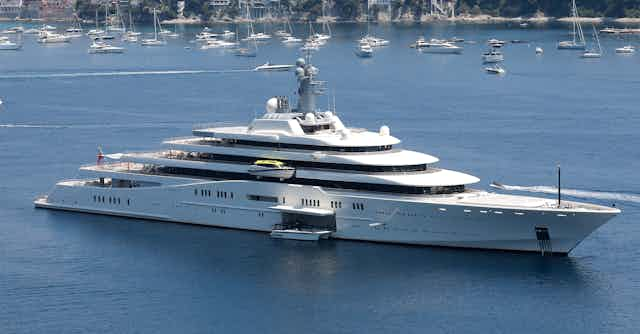
Private planes, mansions and superyachts: What gives billionaires like Musk and Abramovich such a massive carbon footprint
Distinguished Professor and Provost's Professor of Anthropology; Director of the Open Anthropology Institute, Indiana University
Ph.D. Candidate in Anthropology, Indiana University
Disclosure statement
The authors do not work for, consult, own shares in or receive funding from any company or organisation that would benefit from this article, and have disclosed no relevant affiliations beyond their academic appointment.
Indiana University provides funding as a member of The Conversation US.
View all partners
- Bahasa Indonesia
Tesla’s Elon Musk and Amazon’s Jeff Bezos have been vying for the world’s richest person ranking all year after the former’s wealth soared a staggering US$160 billion in 2020, putting him briefly in the top spot .
Musk isn’t alone in seeing a significant increase in wealth during a year of pandemic, recession and death. Altogether, the world’s billionaires saw their wealth surge over $1.9 trillion in 2020, according to Forbes.
Those are astronomical numbers, and it’s hard to get one’s head around them without some context. As anthropologists who study energy and consumer culture, we wanted to examine how all that wealth translated into consumption and the resulting carbon footprint.
Walking in a billionaire’s shoes
We found that billionaires have carbon footprints that can be thousands of times higher than those of average Americans.
The wealthy own yachts, planes and multiple mansions, all of which contribute greenhouse gases to the atmosphere. For example, a superyacht with a permanent crew, helicopter pad, submarines and pools emits about 7,020 tons of CO2 a year, according to our calculations, making it by the far worst asset to own from an environmental standpoint. Transportation and real estate make up the lion’s share of most people’s carbon footprint, so we focused on calculating those categories for each billionaire.

To pick a sample of billionaires, we started with the 2020 Forbes List of 2,095 billionaires. A random or representatives sample of billionaire carbon footprints is impossible because most wealthy people shy away from publicity , so we had to focus on those whose consumption is public knowledge. This excluded most of the superrich in Asia and the Middle East .
We combed 82 databases of public records to document billionaires’ houses, vehicles, aircraft and yachts. After an exhaustive search, we started with 20 well-known billionaires whose possessions we were able to ascertain, while trying to include some diversity in gender and geography. We have submitted our paper for peer review but plan to continue adding to our list.
We then used a wide range of sources, such as the U.S. Energy Information Administration and Carbon Footprint , to estimate the annual CO2 emissions of each house, aircraft, vehicle and yacht. In some cases we had to estimate the size of houses from satellite images or photos and the use of private aircraft and yachts by searching the popular press and drawing on other studies . Our results are based on analyzing typical use of each asset given its size and everything else we could learn.
We did not try to calculate each asset’s “ embodied carbon ” emissions – that is, how much CO2 is burned throughout the supply chain in making the product – or the emissions produced by their family, household employees or entourage. We also didn’t include the emissions of companies of which they own part or all, because that would have added another significant degree of complexity. For example, we didn’t calculate the emissions of Tesla or Amazon when calculating Musk’s or Bezos’ footprints.
In other words, these are all likely conservative estimates of how much they emit.
Your carbon footprint
To get a sense of perspective, let’s start with the carbon footprint of the average person.
Residents of the U.S., including billionaires, emitted about 15 tons of CO2 per person in 2018. The global average footprint is smaller, at just about 5 tons per person.
In contrast, the 20 people in our sample contributed an average of about 8,190 tons of CO2 in 2018. But some produced far more greenhouse gases than others.
The jet-setting billionaire
Roman Abramovich, who made most of his $19 billion fortune trading oil and gas, was the biggest polluter on our list. Outside of Russia, he is probably best known as the headline-grabbing owner of London’s Chelsea Football Club.

Abramovich cruises the Mediterranean in his superyacht, named the Eclipse , which at 162.5 meters bow to stern is the second-biggest in the world, rivaling some cruise ships. And he hops the globe on a custom-designed Boeing 767 , which boasts a 30-seat dining room. He takes shorter trips in his Gulfstream G650 jet, one of his two helicopters or the submarine on his yacht.
He maintains homes in many countries, including a mansion in London’s Kensington Park Gardens, a chateau in Cap D’Antibes in France and a 28-hectare estate in St. Barts that once belonged to David Rockefeller . In 2018, he left the U.K. and settled in Israel , where he became a dual citizen and bought a home in 2020 for $64.5 million.
We estimate that he was responsible for at least 33,859 metric tons of CO2 emissions in 2018 – more than two-thirds from his yacht, which is always ready to use at a moment’s notice year-round.
Massive mansions and private jets
Bill Gates, currently the world’s fourth-richest person with $124 billion, is a “modest” polluter – by billionaire standards – and is typical of those who may not own a giant yacht but make up for it with private jets.

Co-founder of Microsoft, he retired in 2020 to manage the Bill and Melinda Gates Foundation, the world’s largest charity, with an endowment of $50 billion.
In the 1990s, Gates built Xanadu – named after the vast fictional estate in Orson Welles’ “Citizen Kane” – at a cost of $127 million in Medina, Washington. The giant home covers 6,131 square meters, with a 23-car garage, a 20-person cinema and 24 bathrooms. He also owns at least five other dwellings in Southern California, the San Juan Islands in Washington state, North Salem, New York, and New York City, as well as a horse farm , four private jets, a seaplane and “a collection” of helicopters .
We estimated his annual footprint at 7,493 metric tons of carbon, mostly from a lot of flying.
The environmentally minded tech CEO
South African-born Elon Musk, CEO of Tesla Motors and SpaceX, has a surprisingly low carbon footprint despite being the world’s second-richest person, with $177 billion – and he seems intent on setting an example for other billionaires .

He doesn’t own a superyacht and says he doesn’t even take vacations .
We calculated a relatively modest carbon footprint for him in 2018, thanks to his eight houses and one private jet. This year, his carbon footprint would be even lower because in 2020 he sold all of his houses and promised to divest the rest of his worldly possessions .
While his personal carbon footprint is still hundreds of times higher than that of an average person, he demonstrates that the superrich still have choices to make and can indeed lower their environmental impact if they so choose.
His estimated footprint from the assets we looked at was 2,084 tons in 2018.
The value of naming and shaming
The aim of our ongoing research is to get people to think about the environmental burden of wealth.
While plenty of research has shown that rich countries and wealthy people produce far more than their share of greenhouse gas emissions, these studies can feel abstract and academic, making it harder to change this behavior.
[ Like what you’ve read? Want more? Sign up for The Conversation’s daily newsletter .]
We believe “shaming” – for lack of a better word – superrich people for their energy-intensive spending habits can have an important impact, revealing them as models of overconsumption that people shouldn’t emulate.
Newspapers, cities and local residents made an impact during the California droughts of 2014 and 2015 by “drought shaming” celebrities and others who were wasting water, seen in their continually green lawns . And the Swedes came up with a new term – “ flygskam ” or flying shame – to raise awareness about the climate impact of air travel.
Climate experts say that to have any hope of limiting global warming to 1.5 degrees Celsius above preindustrial levels, countries must cut their emissions in half by 2030 and eliminate them by 2050.
Asking average Americans to adopt less carbon-intensive lifestyles to achieve this goal can be galling and ineffective when it would take about 550 of their lifetimes to equal the carbon footprint of the average billionaire on our list.
- Climate change
- Carbon emissions
- Carbon footprint
- Paris Agreement
- Billionaires
- Roman Abramovich

Assistant Editor - 1 year cadetship

Program Development Officer - Business Processes

Executive Dean, Faculty of Health

Lecturer/Senior Lecturer, Earth System Science (School of Science)

Sydney Horizon Educators (Identified)
- Share full article
Advertisement
Supported by
Guest Essay
The Superyachts of Billionaires Are Starting to Look a Lot Like Theft

By Joe Fassler
Mr. Fassler is a journalist covering food and environmental issues.
If you’re a billionaire with a palatial boat, there’s only one thing to do in mid-May: Chart your course for Istanbul and join your fellow elites for an Oscars-style ceremony honoring the builders, designers and owners of the world’s most luxurious vessels, many of them over 200 feet long.
The nominations for the World Superyacht Awards were all delivered in 2022, and the largest contenders are essentially floating sea mansions, complete with amenities like glass elevators, glass-sided pools, Turkish baths and all-teak decks. The 223-foot Nebula, owned by the WhatsApp co-founder Jan Koum, comes with an air-conditioned helicopter hangar.
I hate to be a wet blanket, but the ceremony in Istanbul is disgraceful. Owning or operating a superyacht is probably the most harmful thing an individual can do to the climate. If we’re serious about avoiding climate chaos, we need to tax, or at the very least shame, these resource-hoarding behemoths out of existence. In fact, taking on the carbon aristocracy, and their most emissions-intensive modes of travel and leisure, may be the best chance we have to improve our collective climate morale and increase our appetite for personal sacrifice, from individual behavior changes to sweeping policy mandates.
On an individual basis, the superrich pollute far more than the rest of us, and travel is one of the biggest parts of that footprint. Take, for instance, Rising Sun, the 454-foot, 82-room megaship owned by the DreamWorks co-founder David Geffen. According to a 2021 analysis in the journal Sustainability, the diesel fuel powering Mr. Geffen’s boating habit spews an estimated 16,320 tons of carbon-dioxide-equivalent gases into the atmosphere annually, almost 800 times what the average American generates in a year.
And that’s just a single ship. Worldwide, more than 5,500 private vessels clock in about 100 feet or longer, the size at which a yacht becomes a superyacht . This fleet pollutes as much as entire nations: The 300 biggest boats alone emit 315,000 tons of carbon dioxide each year, based on their likely usage — about as much as Burundi’s more than 10 million inhabitants. Indeed, a 200-foot vessel burns 132 gallons of diesel fuel an hour standing still and can guzzle 2,200 gallons just to travel 100 nautical miles.
Then there are the private jets, which make up a much higher overall contribution to climate change. Private aviation added 37 million tons of carbon dioxide to the atmosphere in 2016, which rivals the annual emissions of Hong Kong or Ireland. (Private plane use has surged since then, so today’s number is likely higher.)
You’re probably thinking: But isn’t that a drop in the bucket compared with the thousands of coal plants around the world spewing carbon? It’s a common sentiment; last year, Christophe Béchu, France’s minister of the environment, dismissed calls to regulate yachts and chartered flights as “ le buzz ” — flashy, populist solutions that get people amped up but ultimately only fiddle at the margins of climate change.
But this misses a much more important point. Research in economics and psychology suggests humans are willing to behave altruistically — but only when they believe everyone is being asked to contribute. People “stop cooperating when they see that some are not doing their part,” the cognitive scientists Nicolas Baumard and Coralie Chevallier wrote last year in Le Monde.
In that sense, superpolluting yachts and jets don’t just worsen climate change; they lessen the chance that we will work together to fix it. Why bother when the luxury goods mogul Bernard Arnault is cruising around on the Symphony, a $150 million, 333-foot superyacht?
“If some people are allowed to emit 10 times as much carbon for their comfort,” Mr. Baumard and Ms. Chevallier asked, “then why restrict your meat consumption, turn down your thermostat or limit your purchases of new products?”
Whether we’re talking about voluntary changes (insulating our attics and taking public transit) or mandated ones (tolerating a wind farm on the horizon or saying goodbye to a lush lawn), the climate fight hinges, to some extent, on our willingness to participate. When the ultrarich are given a free pass, we lose faith in the value of that sacrifice.
Taxes aimed at superyachts and private jets would take some of the sting out of these conversations, helping to improve everybody’s climate morale, a term coined by the Georgetown Law professor Brian Galle. But making these overgrown toys a bit more costly isn’t likely to change the behavior of the billionaires who buy them. Instead, we can impose new social costs through good, old-fashioned shaming.
Last June, @CelebJets — a Twitter account that tracked the flights of well-known figures using public data, then calculated their carbon emissions for all to see — revealed that the influencer Kylie Jenner took a 17-minute flight between two regional airports in California. One Twitter user wrote , “kylie jenner is out here taking 3 minute flights with her private jet, but I’m the one who has to use paper straws.”
As media outlets around the world covered the backlash, other celebrities like Drake and Taylor Swift scrambled to defend their heavy reliance on private plane travel. (Twitter suspended the @CelebJets account in December after Elon Musk, a frequent target of jet-tracking accounts, acquired the platform.)
There’s a lesson here: Hugely disproportionate per capita emissions get people angry. And they should. When billionaires squander our shared supply of resources on ridiculous boats or cushy chartered flights, it shortens the span of time available for the rest of us before the effects of warming become truly devastating. In this light, superyachts and private planes start to look less like extravagance and more like theft.
Change can happen — and quickly. French officials are exploring curbing private plane travel. And just last week — after sustained pressure from activists — Schiphol Airport in Amsterdam announced it would ban private jets as a climate-saving measure.
Even in the United States, carbon shaming can have outsize impact. Richard Aboulafia, who’s been an aviation industry consultant and analyst for 35 years, says that cleaner, greener aviation, from all-electric city hoppers to a new class of sustainable fuels, is already on the horizon for short flights. Private aviation’s high-net-worth customers just need more incentive to adopt these new technologies. Ultimately, he says, it’s only our vigilance and pressure that will speed these changes along.
There’s a similar opportunity with superyachts. Just look at Koru, Jeff Bezos’ newly built 416-foot megaship, a three-masted schooner that can reportedly cross the Atlantic on wind power alone. It’s a start.
Even small victories challenge the standard narrative around climate change. We can say no to the idea of limitless plunder, of unjustifiable overconsumption. We can say no to the billionaires’ toys.
Joe Fassler is a journalist covering food and environmental issues. He is the author of “Light the Dark ” and the forthcoming novel “The Sky Was Ours.”
The Times is committed to publishing a diversity of letters to the editor. We’d like to hear what you think about this or any of our articles. Here are some tips . And here’s our email: [email protected] .
Follow The New York Times Opinion section on Facebook , Twitter (@NYTopinion) and Instagram .

The global authority in superyachting
- NEWSLETTERS
- Yachts Home
- The Superyacht Directory
- Yacht Reports
- Brokerage News
- The largest yachts in the world
- The Register
- Yacht Advice
- Yacht Design
- 12m to 24m yachts
- Monaco Yacht Show
- Builder Directory
- Designer Directory
- Interior Design Directory
- Naval Architect Directory
- Yachts for sale home
- Motor yachts
- Sailing yachts
- Explorer yachts
- Classic yachts
- Sale Broker Directory
- Charter Home
- Yachts for Charter
- Charter Destinations
- Charter Broker Directory
- Destinations Home
- Mediterranean
- South Pacific
- Rest of the World
- Boat Life Home
- Owners' Experiences
- Interiors Suppliers
- Owners' Club
- Captains' Club
- BOAT Showcase
- Boat Presents
- Events Home
- World Superyacht Awards
- Superyacht Design Festival
- Design and Innovation Awards
- Young Designer of the Year Award
- Artistry and Craft Awards
- Explorer Yachts Summit
- Ocean Talks
- The Ocean Awards
- BOAT Connect
- Between the bays
- Golf Invitational
- Boat Pro Home
- Global Order Book
- Superyacht Insight
- Premium Content
- Product Features
- Testimonials
- Pricing Plan
- Tenders & Equipment

How Emissions Regulations Are Affecting The Superyacht Industry
Regulations aimed at limiting noxious emissions from superyacht engines will be in place by January 2021. Kate Lardy investigates how these new rules are impacting the industry ahead of the approaching deadline.
“After January 1, 2021, we are out of business selling boats over 24 meters,” Pat Healey, president and CEO of Viking Yachts , announced at the Fort Lauderdale Boat Show this past fall. He was referring to the upcoming deadline for all yachts over 24 meters load line length (approximately 27.5 meters or 90ft LOA) to comply with the International Maritime Organisation’s (IMO) Tier III limits for nitrogen oxide (NOx) emissions. More precisely, he was speaking about the impracticality of meeting this requirement on Viking’s 92 Convertible and 93 Motor Yacht – models Healey says the yard will no longer build after January 1 2021. “[Regulators] are mandating impossible regulations that require solutions that don’t exist in today’s world,” he added.
Tier III (part of amendments made to the International Convention for the Prevention of Pollution from Ships adopted in 2008) came into effect on January 1, 2016. It set new NOx emission limits for new engines on vessels operating within special areas known as NOx Emission Control Areas (which currently are: the East and West Coasts of the US and Canada, and around the US Virgin Islands, Hawaii and Puerto Rico). Regulators granted a five-year exemption for vessels under 500GT to allow technology time to catch up with the requirements. Unfortunately, it hasn’t.
Viking is the first and only builder so far to announce that it will terminate production of its two largest models because of the regulations, yet the impending deadline is an issue concerning all builders of boats in the 90ft to 150ft range.
One Solution Does Not Fit All
Engine modifications aren’t enough to meet the Tier III standards – compliance requires some sort of exhaust after-treatment. The go-to solution for ships and new yachts over 500GT, which have had to comply since 2016, has been selective catalytic reduction (SCR), which uses a urea water solution to break down NOx into harmless nitrogen and water. Results have been mixed. SCR has worked for commercial ships. The challenge is that a yacht’s operating profile is critically different from a ship’s – the average engine load while cruising is lower. SCR requires that exhaust temperatures reach a certain level to decompose urea exhaust fluid to water vapour and ammonia, so it can be ineffective at idle and low speeds.
Because of a yacht’s high power-to-weight ratio, the hefty system also has more impact on a yacht’s efficiency and performance. SCR makes boats heavier, slower and more expensive to operate and maintain, says Lonni Rutt, Viking’s vice president of design and engineering. The SCR footprint, according to Rutt, is approximately one-third of each engine. “We simply don’t have the space in our engine rooms,” he says, adding that this issue is particularly critical in the 90ft to 120ft segment.
However, Richard Boggs of EnerYacht (developer of the SeaClean exhaust treatment system) says the impact extends to even larger yachts. “There isn’t that much volume in a 50-meter [164ft] boat to put the SCR systems that are on the market right now,” he says.
Then there is the added problem of incorporating a tank to hold urea. The size that the tank needs to be is still a matter of debate. In theory, a yacht needs to carry only enough urea to run the SCR within an Emission Control Area. However, assessing the amount is tricky. Too little and you run out and risk exorbitant fines for noncompliance; too much and you may incur maintenance issues. “The storage life of the diesel exhaust fluid [DEF, the urea solution] is around six months; after that time, it will crystallise and possibly block the DEF piping if the water content vaporises,” says Roger Sowerbutts, president of Horizon Yacht USA . Horizon is looking at a tank able to hold five to 10 percent of the fuel capacity.
The Quest Is On
Currently, research and development are in high gear on a growing number of after-treatment systems. Boggs is working with a European partner in the SCR retrofit business that has been conducting certified retrofits for buses in several European cities. He is marinising their tried-and-true system, which works in conjunction with EnerYacht’s highly effective diesel particulate filter system.
Yacht exhaust specialist MarQuip recently introduced a solution it calls the “most compact custom system for yachts under 500GT or 50 meters.” Prompted by a Dutch client building a 92ft semi-displacement boat, it created a case study that integrates its water injection system inside the SCR/silencer unit without having to increase the size of the engine room.
“We normally work with water-cooled exhaust systems – we combine our features to save space and fit the correct after-treatments in the same location as we had the original exhaust system,” says Jeroen van der Matten, general manager of operations for MarQuip. Installed above the engines, the system is approximately 7ft 6in by 4ft 7in for this particular 92ft boat.
Sanlorenzo is collaborating with other yacht builders to develop alternative solutions that will be lighter and more efficient than SCR at idle and low-speed navigation. “This is the direction already taken by Feadship that, recognising the same problems with SCR on mega yachts over 500GT, is now working to test and implement an innovative NOx treatment system together with the Netherlands Organization for Applied Scientific Research, TNO,” says Paolo Bertetti, Sanlorenzo’s technical and R&D vice president.
Feadship’s innovation is called Oxywash. Divided into modules, it fits in tight engine rooms and does not require a urea tank. It works by making NOx water-soluble, through a catalyst when the exhaust temperature is high, or by injecting ozone when the temperature is lower. When this water-soluble NOx is immersed in seawater it becomes nitrite and nitrate, which are naturally present in seawater.
“At the moment we are running a full-scale test with regulation, which will be finished in 2020. After successful tests we will install the first system on a Feadship,” says Roderick De Vries, technical director at Feadship Koninklijke De Vries Scheepsbouw. A number of yacht builders are waiting on engine manufacturers to deliver the engine and SCR system as one unit, rather than adding on third-party after- treatment. For Horizon, Sowerbutts says that MAN has presented a good solution for the 1,650hp engine: a compact SCR with small DEF pump and no need for a compressor to assist. MTU is working on its own solution. Tobias Kohl, MTU Friedrichshafen’s senior manager for yacht applications, says the company is “putting maximum R&D efforts” into the SCR for its series 2000 engines; the first prototypes have been built and tested.
Time Crunch
The challenge is that the January 1, 2021 deadline is fast approaching. Regulators have put the onus on engine manufacturers, but they appear not ready. “Considering that we have the highest power density engine, the integration with SCR systems requires intensive testing and optimisation,” Kohl says. “Based on the technical development challenges, as well as the demanding integration work at the shipyards, we believe that a transition phase is needed for development and implementation of SCR systems in yachts requiring IMO Tier III solutions.”
The rush to 2021 concerns Nicola Onori, technical director at Overmarine . “If extension of the exemption is not granted, all yachts will be forced to install SCR systems which are still ‘prototypes.’” As it currently stands, Healey has heard that it will be at least 12 to 18 months past deadline before the engine companies are compliant. “In our view, more time is needed to allow engine manufacturers to refine SCR dedicated to yachts greater than 24 meters, less than 500GT, in order to get an overall positive effect on emissions,” Bertetti says.
Several yacht builders, including Viking Yachts, Overmarine and Sanlorenzo, have been working with the International Council of Marine Industry Associations (ICOMIA) on a new request for an extension – a previous proposal was rejected at a May 2019 meeting of the IMO Marine Environment Protection Committee. Two MEPC meetings are planned for 2020 and ICOMIA is hoping to get an appeal on the agenda before January 1, 2021.
Brace for Impact
“The pending IMO implementation is well intentioned but could see an entire segment of yacht buyers walk away from our industry, causing irreparable damage,” says Kitty McGowan, president of the US Superyacht Association. Bertetti adds: “If IMO NOx Tier III will have to be applied from January 2021 we expect that clients will buy either yachts slightly below the limit of 24 meters or exceeding 30 to 35 meters, where the reduction of accommodation space necessary to install an SCR and urea tank is not affecting the number of cabins available on board.”
Onori says that the regulations could make second- hand boats – with older, more polluting engines – more appealing. Costs for new vessels will go up. How much? “The engine manufacturers can’t provide precise quotes yet,” Sowerbutts says. “The extra cost will have to include DEF or urea tank, DEF pump, SCR and probably in many cases a hull extension to accommodate everything mentioned above.” Viking estimates it would add half a million dollars to the overall cost of its 92 and 93. “We have two boats affected; some companies will be wiped out,” Healey says.
Similar yachts for sale
More stories, most recent, from our partners, sponsored listings.

By Megan Hickling 13 Sep 2023
Incentivising emissions reductions
Cruise ships visiting bergen and reporting to the environmental port index (epi) can see their port fees reduced….
The Environmental Port Index (EPI) is a registered company that offers financial incentives to vessels to operate in a more environmentally friendly way while in port. It achieves this by providing information to ports that link a vessel's environmental performance to the port fees that they will be charged.
SuperyachtNews speaks with Even Husby, the Head of Environment at the Port of Bergen and CEO of EPI, about how EPI works and its potential application for superyachts in the future.
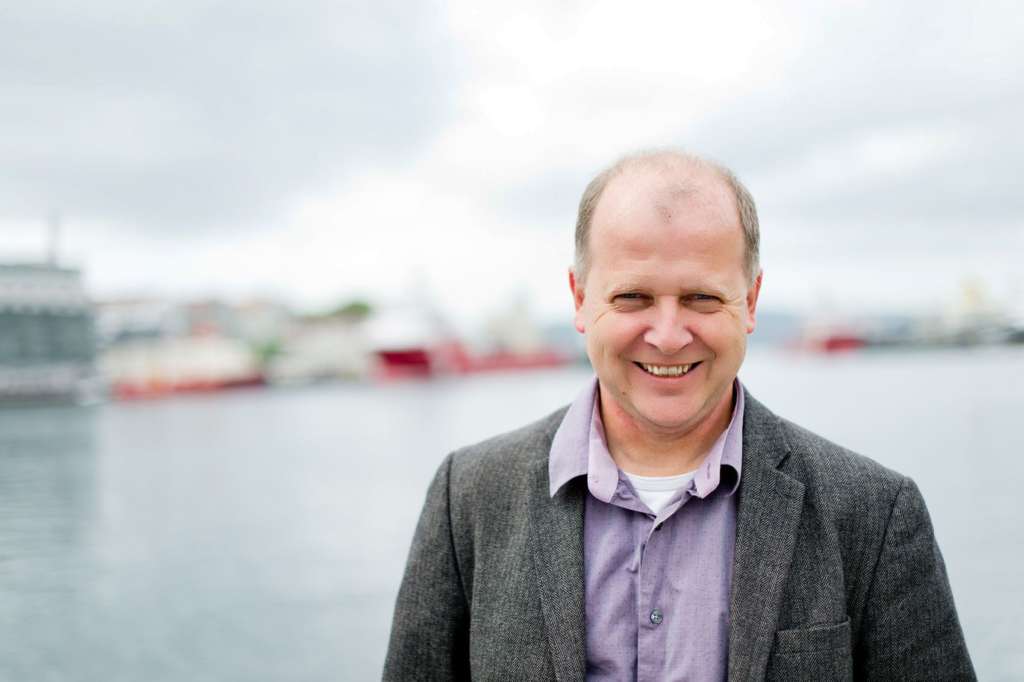
According to Husby, the EPI was born out of frustrations with the fragmented or total lack of transparency in the operational environmental performance of cruise ships in Norway. EPI provides a consistent approach to measuring emissions, offering a broader understanding of how a ship's operational performance affects emissions when in port.
The EPI process begins by establishing a ship's baseline. This assesses the maximum tolerable quantities of different air emissions that can occur when a ship is in port, including CO2, SO2, NOx, and particle levels. These calculations are based on both the ship's generators/engines and international regulations such as the IMO tiers for NOx and SOx emissions.
After the assessment, upon departure, a ship self-reports key utility data to the EPI, including fuel consumption, fuel quality, and the use of emission reduction technologies like scrubbers and SCR systems. This information is then used to estimate associated emissions, which are further calculated using a process quality-controlled by DNV, creating a score compared to the baseline.
A score of 0 represents the highest direct air emissions from the ship, while a score of 100 indicates zero direct air emissions, achieved by connecting to shore power. The EPI provides this database to ports, allowing them to incentivize environmentally friendly practices by increasing fees for those not performing well in reducing environmental impact.
"While initial adoption has been focused on Norway, recent interest has emerged from Iceland, with a total of 29 participating ports. Over 100 ships are now in the EPI database, including 111 cruise ships operated by 18 different companies."
Husby believes that the potential for emissions reduction is substantial, primarily because EPI assesses the actual operational reductions made when at port, rather than the technical capabilities onboard for reductions. EPI data has shown a midsize cruise ship can typically reduce CO2 emissions by up to 20% on average due to reduced fuel usage. These reductions across the reporting fleet so far have contributed to a total SOx reduction of 12 tonnes and a NOx reduction of 300 tonnes.
Superyachts are "high on the agenda" for future developments of EPI, alongside plans to expand into popular cruise areas such as the Mediterranean and North America and include other types of emissions. They also aim to expand the range of vessel types reporting to the database.
"The Port of Bergen has experience with visiting superyachts and has shown interest in superyacht involvement with EPI," Husby points out. In March 2023, a partnership was announced between the SEAIndex and EPI. This collaboration aims to draw from their collective experience to build a better system for superyachts within EPI.
If more destinations visited by superyachts adopt the incentive scheme provided by accessing EPI information, at the same time as existing superyacht reporting programmes such as YETI from Water Revolution and SEAIndex gather momentum, there is significant potential for emission reductions, similar to the impact observed in the cruise industry.
Join the discussion
To post comments please Sign in or Register
When commenting please follow our house rules
Click here to become part of The Superyacht Group community, and join us in our mission to make this industry accessible to all, and prosperous for the long-term. We are offering access to the superyacht industry’s most comprehensive and longstanding archive of business-critical information, as well as a comprehensive, real-time superyacht fleet database, for just £10 per month, because we are One Industry with One Mission. Sign up here .
Related news

EU sets new battery sustainability regulations
After an EU Parliament vote, the European Council adopts new regulations strengthening sustainability rules for battery use and waste

MB92 Group announces ‘Refit for the Future’
The dedicated sustainability refit service aims to help reduce the environmental impact of yachts, cut operational and financing costs, and protect resale value

YETI 1.0 goes live
The Yacht Environmental Transparency Index (YETI) from Water Revolution Foundation aims to define industry sustainability with data
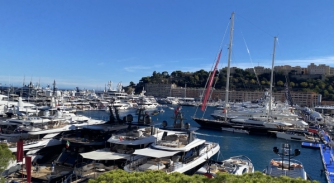
MYS Sustainability Conference highlights
The opening conference of the show saw some of the industry's innovators in sustainable development outline their visions
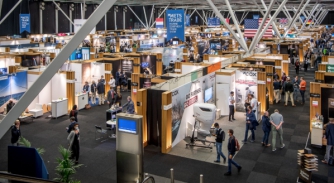
Superyacht Sustainability Route - METSTRADE 2022
In partnership with Water Revolution Foundation, the initiative at METSTRADE will help exhibitors to verify the sustainability credentials of exhibitors
10 months ago
2 years ago
Sign up to the SuperyachtNews Bulletin
Receive unrivalled market intelligence, weekly headlines and the most relevant and insightful journalism directly to your inbox.
Sign up to the SuperyachtNews Bulletin
The superyachtnews app.

Follow us on
Media Pack Request
Please select exactly what you would like to receive from us by ticking the boxes below:
SuperyachtNews.com
Register to comment

Find anything, super fast.
- Destinations
- Documentaries

Behind the Drawing Board of Zero Emission Trimaran DOMUS
By Emily Dawkins
Rob Doyle Design and Van Geest Design have partnered up to bring an innovative new superyacht concept to the industry: 40m sailing trimaran DOMUS. With space and performance paramount to the design, DOMUS has been created as the, 'first truly zero emission yacht over 750 gross tonnes’. Superyachts.com sat down with Rob Doyle and Mark Small of Rob Doyle Design, and Pieter Van Geest of Van Geest Design, to find out more about this groundbreaking concept.
With a wealth of yachting knowledge and years of design expertise under their belts, Irish yacht design and naval architecture firm, Rob Doyle Design, and Dutch yacht design studio, Van Geest Design, have created nothing short of a masterpiece with their latest superyacht concept.
40m DOMUS is a completely unique one-floor trimaran concept powered by sustainable technologies that challenges the conventions of yacht design. Named after the Latin word 'domus' which means, ‘a single-storey house built around a courtyard known as an atrium’, the 40m vessel cleverly recreates this bungalow-style experience onboard. Six guest staterooms, including two expansive owner’s suites with private lounge areas, cleverly span across the one deck, and surround two courtyards which can open or close from above. Alongside this, a cinema room, gym, sauna, massage room and swimming pool are just some of the incredible amenities packed onboard.
Featuring a combination of solar power, hydro regeneration and hydrogen fuel cells, DOMUS has an unlimited range with zero emissions, with an optimised battery storage that allows for complete silence when at anchor.
As a unique, innovative and completely original design concept, we spoke to the trio behind the design to find out more.
Where did the inspiration for DOMUS come from?
Rob Doyle: We had a client approach us about a 40m catamaran which we started drawing up together, and we quickly saw that we were coming into the standard roadblocks that most multihulls experience. We know that with racing multihulls the trimaran is always faster, and so we looked at simplifying the boat by having all the systems and rigging loads in the main hull, with the two hulls on either side for tankage, storage and tenders. We saw a huge amount of advantages for a trimaran, and once we took that step forward we said “let's push it”. Let's see how far we can go with the beam before we run into difficulties, whilst having an eye on making sure it can be built. What we suddenly discovered was that there are so many advantages of going down this road that it kept getting better and better. So from there we came up with the amazing DOMUS concept.
How did you come to create her unique design?
RD: We were trying not to do the Google search of “what do catamarans and multihulls look like”, which is the biggest problem with the industry - that it is dictated by Google . People often Google “superyachts”, see a couple of yacht designs and decide that they ultimately want a 2.0 of the designer’s last boat, which makes all the boats very similar. We however, just started with a blank piece of paper. We wanted to go to our client and give him something fresh. It was a big risk, but we knew we were on a far better path and we could give him an amazing product by doing it this way.
Mark Small: It’s amazing how much DOMUS has touched a chord with people. We’ve been looking at it for a while and trying to come up with the best plan, but we didn't realise how good of an idea we hit on until we got the reaction from the public which was fantastic.
How long did the design process take?
RD: We’ve been working on this for about 4 or 5 months. No sketch is wasted and we’re constantly layering. You’re dictated by the development and the process of designing. Designers never stop drawing, it's in our nature to keep drawing until someone says stop or you've run out of time, so DOMUS constantly evolved!
MS: The great fun about it is that our mantra is “no idea is too mad”! It may not ultimately end up being there, but certainly nothing is off the table.
Pieter Van Geest: We’ve known each other for almost 30 years so it's been a very friendly collaboration. We all talk the same language, we all like to do new things. For us, copy and paste just doesn't fit our DNA.
Is DOMUS able to be built?
RD: That's our number one goal for all our concepts. We don't sketch boats that can’t be built. You see these crazy designs coming out and you know they can't be built, so we always start with a very solid foundation in regards to, how do we build this? How do we make the shipyard's construction easier? It has to be plausible before we make the jump forward with the layouts and systems; we need to know that we can actually build it first before we take that jump forward.
As a completely new, never-built-before vessel, how would you expect the build process to happen?
RD: If you look at how big ships are built, they are generally built in sections and then brought to the dry dock for assembly. That process is certainly repeatable with the trimaran. It’s possible to build and it's not something that hasn't been done before: all big ships and cruise liners are built on this modular approach, and there does have to be a touch of reality to it. So many concepts are copy and paste or in flights of fantasy and are produced for clickbait. This can be built and that's why we’re expecting the hard questions.
MS: We approached one or two yards to get a feel for this with them and they were extremely enthusiastic, they really have a can-do attitude. The yard’s have an appetite for it, we have an appetite for it, and obviously the market seems to have an appetite for it too: there's nothing else like it.
How did you come to reach the impressive characterisation of DOMUS being the ‘first truly zero emission yacht’?
RD: We know this is feasible, it's not that it's a pie in the sky. All the technologies are currently available and being used. The uniqueness of DOMUS is that we’ve been able to combine all those particular elements and are able to fit all this technology onboard: this is why it will be zero emission. We have to be very clear however that it doesn't mean that it's carbon neutral. What we’re talking about is as the boat operates, it will not emit any emissions.
How will she provide a comfortable sailing experience as a trimaran?
MS: DOMUS has the advantages of being a multihull, she’s not going to rock and roll at anchor, so has that real comfort and stability. When you’re at anchor you have your own private island and it's easy to get ashore with the tenders.
Why did you decide on a one-floor interior layout?
RD: We quickly realised that the interior was so vast we had to change how we designed it. So Pieter suggested an apartment set up. Once you break it up into these spaces, suddenly it all worked.
PVG: The challenge is that superyacht trimarans don't really exist. To look at all the other catamarans you can quickly see that the outer hulls are used for the cabins. This is a shame because you get staircases and it starts to become a more complicated and costly build. It was relatively easy to decide, and we started to think about if we do it all on one floor, what are we going to put in it? When we started to develop this we had the family in mind, so we wanted it to be protected too.
MS: The way that clients seem to be using their boats has changed since the pandemic: they’re spending a lot more time onboard and that needs to change the way that we look at and approach the boat. That's why we created these two enormous owner’s cabins onboard that have their own private sitting room: it's like a private apartment onboard. That is something exceptional on a 40m boat, you may see it on 80-90m where you have private decks but you just don't get that on a 40m, and that's the advantage of the space that we have. We also have two 8m tenders onboard. For a 40m boat that's incredible. Each of these are in the outside hulls which makes it very easy for the guests and the crew to move ashore.
What can we expect from Rob Doyle Design and Van Geest Design next?
RD: We’re quite comfortable with difficult projects. Our history has always been the tip of the sword with technology, whether it's the biggest rig in the world, or the biggest aluminium boat in the world, we’ve done a lot of those through our milestones over the last two and a half decades. The way the industry is going, we’ve tried to package the boats into a much more compact space: bigger isn't always best, yes we’ll always go that way, but with the 40m, we’ve packed a 60m motor boat into a sailing boat. That's a challenge that we enjoy doing: thinking a little bit differently from everybody else's metrics, and just making sure that we can do something different.
PVG: From our point of view, this is all really exciting as we always try to come up with new “things”, which is difficult because you don't always achieve them. In our design history, we have a couple of unique projects but this is definitely top because it has never been done before. It's all doable and sensible, and we look at each other and think why didn't anyone else come up with this before?
"We’ve packed a 60m motor boat into a 40m sailing boat. That's a challenge that we enjoy doing; thinking a little bit differently from everybody else's metrics and just making sure that we can do something different." Rob Doyle, Rob Doyle Design
"We’ve packed a 60m motor boat into a 40m sailing boat. That's a challenge that we enjoy doing; thinking a little bit differently from everybody else's metrics and just making sure that we can do something different."
Related News
Featured events.
- celebrities

From Private Jets to Superyachts, Here’s the Climate Impact of the Rich and Famous
A s Americans bear the brunt of heat waves, a multi-year drought, and devastating floods, celebrities are being criticized for their exorbitant lifestyles and apparent disregard for the ongoing climate crisis.
The Los Angeles Times reported on Monday that entertainers including Kim Kardashian and Sylvester Stallone were among the more than 2,000 people the Las Virgenes Municipal Water District issued “notices of exceedance” to, alerting homeowners that they used more than 150% of their monthly water budget at least four times since a drought emergency was declared just last year.
And a recent report by Yard, a UK-based sustainability marketing agency, analyzed flight data of the celebrities with the worst private jet emissions. Taylor Swift topped the list at more than 170 flights since January, totalling up to 15.9 days in the air, and 8,293.54 metric tons of CO2 emissions—that’s equivalent to all the emissions from the energy used by over 1,000 homes in the U.S. for a year.
Swift’s representatives, and that of other celebrities, have since denied the claims, saying their jets have been loaned out to others, or that the individuals in question do not own them. And Stallone’s attorney said that the water situation was being “mischaracterized,” as Stallone was trying to ensure that he could keep the more than 500 mature trees on the property alive.
In light of this, environmentalists have been calling for stronger restrictions on such wasteful habits as private air and sea journeys—which thanks in part to pandemic travel restrictions have become increasingly popular. Canada, for example, recently announced it will be implementing a new 10% tax on luxury aircrafts and yachts effective Sep. 1, which in part aims to clamp down on the climate impact of these activities.
Here’s what to know about the climate impact of the uber-rich’s favorite forms of luxury travel.
What’s the climate impact of a private jet?
Aviation produces just under one billion tonnes of carbon dioxide emissions annually, accounting for 2.5% of global CO2 pollution.
But while aviation remains a great contributor to the climate crisis, a small number of people are responsible for a large bulk of the impact. In the U.K., surveys in 2013 and 2014 found that just 15% of adults were responsible for 70% of the flights. And according to the clean transport campaign group Transport & Environment , 10% of all flights that departed France in 2019 were private aircrafts.
Read more: Matt Damon Wants You to Care About Water
This is compared to a January Gallup Poll which found that the average American took 1.4 air trips in the past 12 months, with 62% making no trips at all.
The average person produces about 7 metric ton of CO2 annually. Meanwhile, celebrities have emitted an average of more than 3,300 metric tons from their private jets alone so far this year, according to Yard .
In fact, according to @CelebrityJets, a Twitter account that uses data to track celebrities’ private jets, former boxer Floyd Mayweather and celebrity Kylie Jenner have used their planes to take flights under 20 minutes long, for trips that would only take a few hours by car. For comparison, one of Mayweather’s 10-minute flights produced one ton of CO2 , whereas the EPA reports that the typical car will emit 4.6 tons of carbon dioxide annually.
Experts like Colin Murphy, deputy director of the Policy Institute for Energy, Environment and the Economy at the University of California at Davis, told the Washington Post it’s important to look at the frequency of these short trips, and how often these planes carry little to no people.
“They’re doing it in a generally less efficient way than if they were sitting in a coach seat in a 777 or any one of the conventional commercial airliners,” said Murphy. “What you’re doing is you’re burning many hundreds or thousands of gallons of jet fuel to save a carload of people or a couple of carloads of people a few hours.”
What’s the climate impact of a superyacht?
Superyachts can bear a similar burden on the planet, as professors from Indiana University called it “by far the worst asset to own from an environmental standpoint,” in an interview with DW .
An analysis of the top 20 billionaires in the world found that they emitted an average of 8,000 metric tons of CO2 in 2018, of which two-thirds is caused by superyachts. The yacht owned by Roman Abramovich, the billionaire who built a fortune off of trading gas and oil, for example, was responsible for 22,440 metric tons of carbon emissions that year—the same as the emissions released by over 4,800 gasoline cars driving for a year in the U.S.
Read more: To Survive Severe Drought This Summer, California Should Learn From Cape Town’s Water Crisis
Although many experts have pointed to the negative impact these boats can have on the climate, advocates say that not enough is being done. In January, Transport & Environment released a report looking at the exemptions in the European Commission’s Green Deal. Despite measures that would seek to reduce the carbon footprint of the maritime sector, ships over 5,000 gross tonnage and yachts were excluded.
How has the pandemic impacted these activities?
While the pandemic caused a wave of remote work that isolated and devastated many, wealth inequality rose as the world’s 500 richest people collectively saw their wealth increase by more than $800 billion from January to October 2020—the height of the pandemic.
Many of the ultra-wealthy sought to purchase luxury amenities like yachts and private jets during the pandemic as an alternative to flying commercially.
Boat International’s Global Order Book 2022 edition found a 25% increase in the number of new yachts ordered to be built, marking a third year of consistent growth with more than 1,000 boats.
“Everybody just wants freedom, and ultra-high-net-worth individuals can afford it,” Will Christie, a superyacht broker, told the Guardian . “The ability to escape anywhere is very attractive in the current climate. They think: I don’t need to be stuck in the office, and if you’re worth billions, why should you be?”
And this trend does not seem like it will subside in the coming months. Experts indicate that there’s been an increase in the number of first-time buyers and small businesses seeking to purchase private jets, Reuters reports .
“I think the people we’re seeing convert from commercial are not going back to commercial,” Jamie Walker, chief executive of Jet Linx, a company that manages planes and operates private flights, told Reuters. His company has capped sales because they have struggled to keep up with demand.
Airlines’ staffing shortages and cancellations , much of which stems from the push for early retirement pilots faced during the commencement of the pandemic, are sure to entice customers to seek alternatives that can be devastating to the environment.
More Must-Reads From TIME
- The 100 Most Influential People of 2024
- How Far Trump Would Go
- Scenes From Pro-Palestinian Encampments Across U.S. Universities
- Saving Seconds Is Better Than Hours
- Why Your Breakfast Should Start with a Vegetable
- 6 Compliments That Land Every Time
- Welcome to the Golden Age of Ryan Gosling
- Want Weekly Recs on What to Watch, Read, and More? Sign Up for Worth Your Time
Contact us at [email protected]
Underwater superyachts? A CEO is pitching fantastical ships that can go 800 feet down and stay submerged for weeks
- Austria's Migaloo is offering to build a private "submersible superyacht" for the ultrarich.
- It says the M5 would be able to travel 820 feet underwater and stay submerged for a month.
- Despite the high up-front cost, CEO Christian Gumpold says the firm is in talks with buyers.

Forget megayachts. Forget billionaire basements. If you're unfathomably rich and want a new toy, there's an Austrian company that says it will build you a fully submersible yacht.
And this is no rickety Titan submersible .
The Migaloo M5 concept, the company says, involves a 540-foot base-model superyacht that would travel about 820 feet underwater and stay down there for up to a month.
"The needs of superyacht owners for their vessels are more complex than ever," Migaloo CEO Christian Gumpold told Business Insider, adding: "These wishes do not just include performance, length, or design."
Gumpold said that yacht owners were "looking for privacy, security, and protection for themselves, their guests and their valuables, or for the fulfillment of unique experiences up to scientific desires, as well as for the greatest possible exclusivity."
According to its marketing materials, Migaloo says the vessel's layout and features could be designed around any customer priority, whether that's security, thrill seeking, research, or simply vacation.
The company offers prospective buyers a checklist of options, including LED exterior lighting with a laser show, a helipad, a hot-air balloon, and — for the aspiring Bond villain — an underwater shark-feeding station.
The vessel could feasibly host a wealth of supplemental vehicles, including mini submarines, exploration vehicles, and working boats, it said.
Although at times it's described in the company marketing materials as a "private submersible superyacht" the M5 would technically be able to sail as a submarine — an underwater vessel that can launch itself and return under its own power, rather than having to be launched by a mother ship.
It's envisioned as being able to house up to 20 guests and about 40 staffers.
The Migaloo concept aims to satisfy an increasing desire for privacy and security among the world's richest people.
Related stories
The most expensive megayachts ever sold now run into the half-billion-dollar range or more, with at least three $600 million yachts afloat, owned by various oligarchs and oil-state royalty.
Bobbing about underwater in a Migaloo M5, Elon Musk wouldn't have to worry about a jet-tracking student any longer.
Gumpold told BI he had specialized in yacht design since 2008, and he promised that all the complex arrangements of the Migaloo project — working with shipyards, flag states, and classification societies — would be taken care of by his company.
Much of the marketing material for Migaloo runs to possibilities that sound like science fiction, addressing problems that would either apply only to the ultrarich or which the rest of us would be too dead to care about.
Saying it works with the security company Safe, Migaloo claims it could create a "private submersible fortress," offering protection from electromagnetic pulses, cybercrime, piracy, solar flares, asteroids, and polar shifts.
That's on top of a gamut of features that any megayacht owner might expect, including spas, gyms, a gaming room, a wine cellar, an art gallery, and a panic room.
The cost, however, is the ultimate "if you have to ask, you can't afford it" test.
Gumpold told Fast Company that the price depended on the scope of the client's requests, comparing it to the price tag on large superyachts.
According to Fast Company's estimation, there are only 50 people in the world who could afford to purchase a luxury submergible megayacht.
It remains to be seen if and when any prospective buyers will bite.
Gumpold told BI his company was "still in close contact with several potential owners worldwide" and "very close" to executing the first project steps.
But he didn't elaborate on any concrete steps and wouldn't name any of his prospective clients.
With a turnaround time of about four to seven years, it's also going to be awhile before any of them would take to the seas.
Watch: The search is on for clues in the Titan sub implosion
- Main content

Love Exploring
15 Extraordinary Superyachts Setting Sail In 2024
Posted: March 19, 2024 | Last updated: March 19, 2024
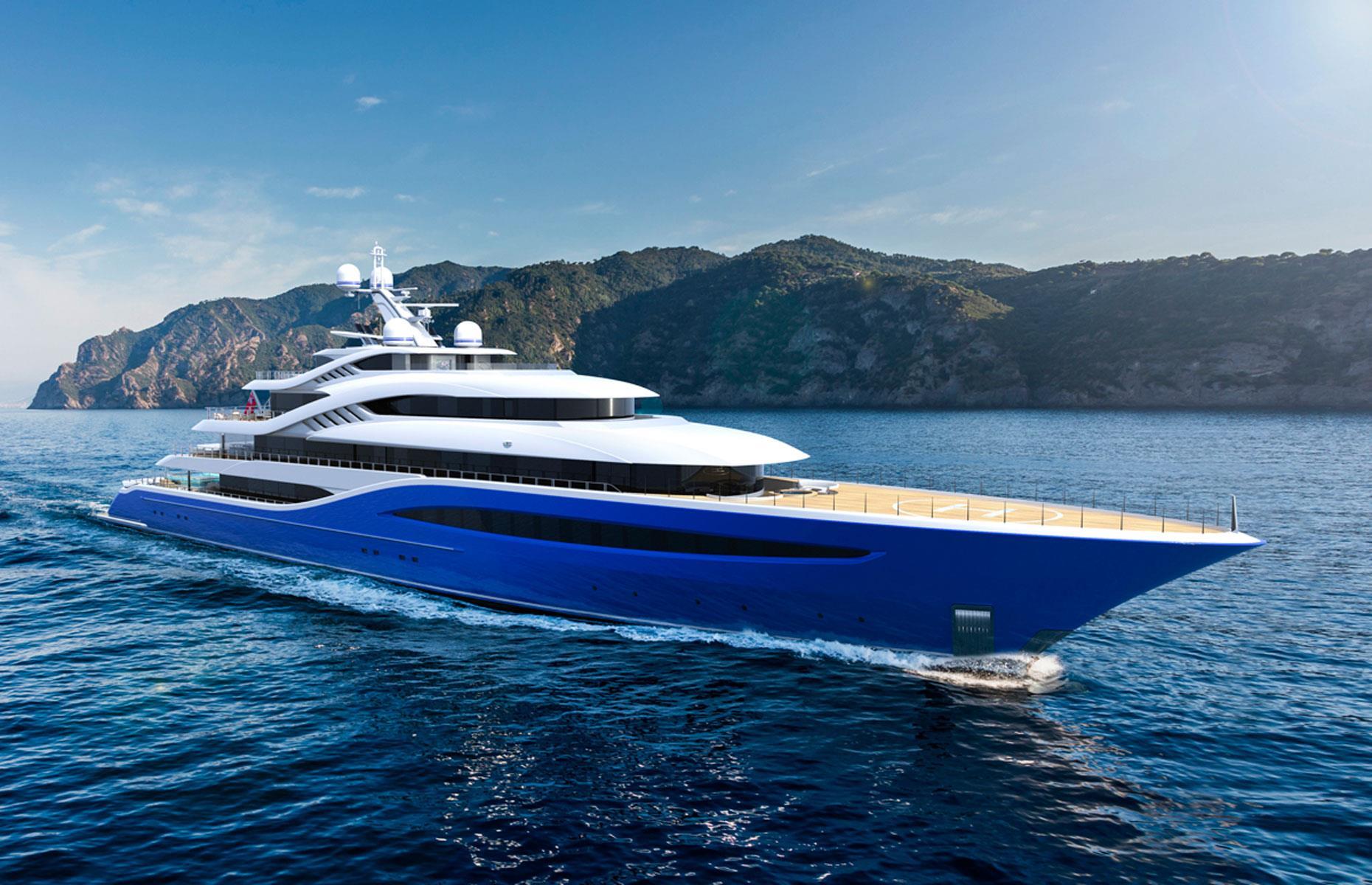
Breathtaking dream boats launching this year
Ready to discover the ultimate in nautical eye candy?
With the largest-ever superyacht poised to grace the high seas – and several other spectacular launches on the horizon – 2024 is tipped to be a truly unforgettable year for fans of floating palaces.
Click or scroll through to jump aboard the most hotly anticipated superyachts scheduled for delivery this year, from state-of-the-art explorers to a record-breaking model that's expected to cost a staggering $600 million.
All dollar amounts in US dollars.
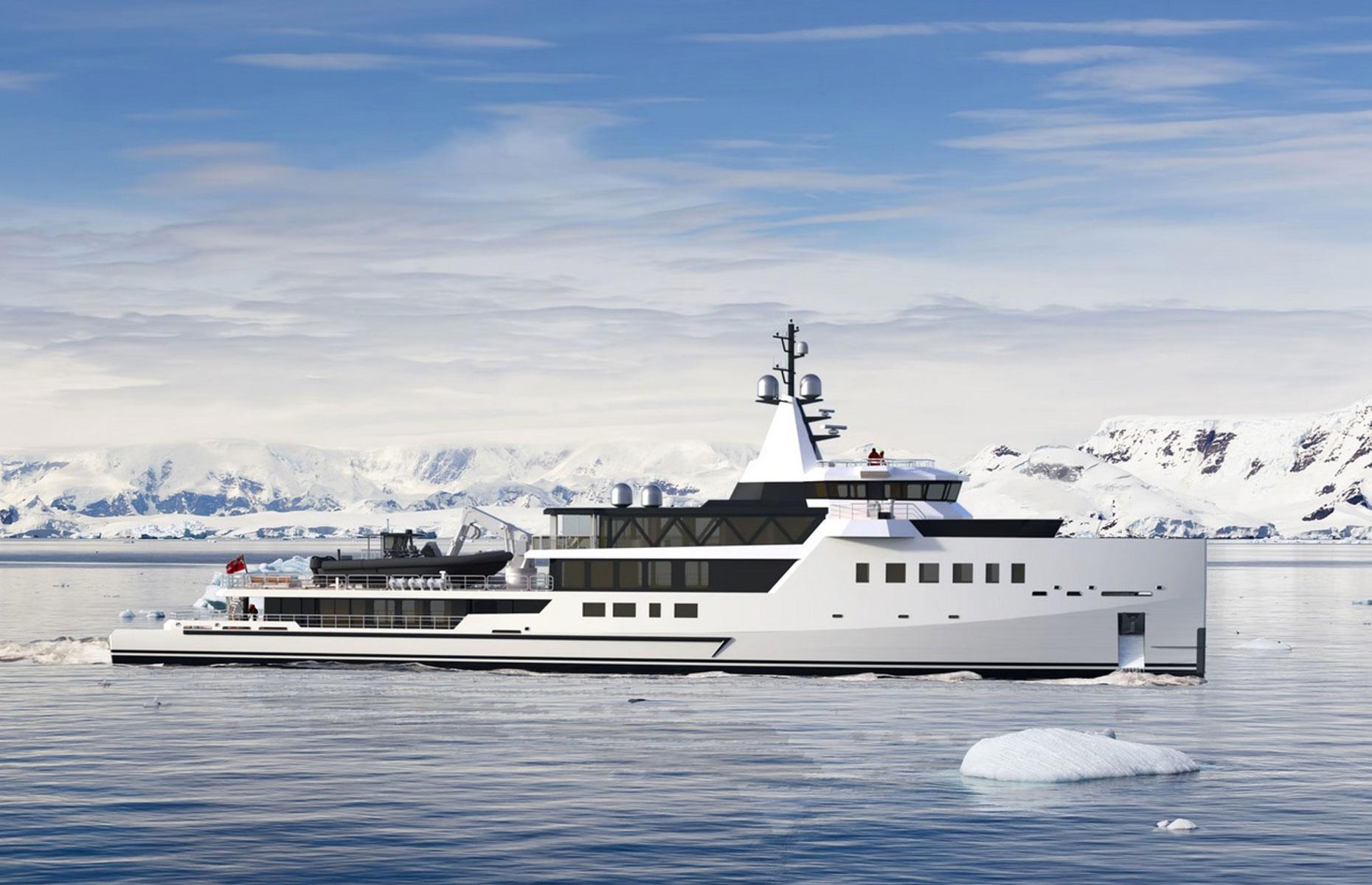
Custom YS 75 Hybrid: Cost unknown
Ushering in a new generation of high-end eco explorers, this expedition vessel from Damen Yachting in the Netherlands boasts a hybrid propulsion system for zero-emission cruising. For the uninitiated, a hybrid propulsion system uses two or more forms of propulsion, such as a biofuel or diesel engine combined with an electric machine.
As buyers become increasingly aware of environmental concerns, naval architects and yachtbuilders are devising green-leaning vessels that don't compromise on style, luxury, or performance. Damen is among the firms leading the way.
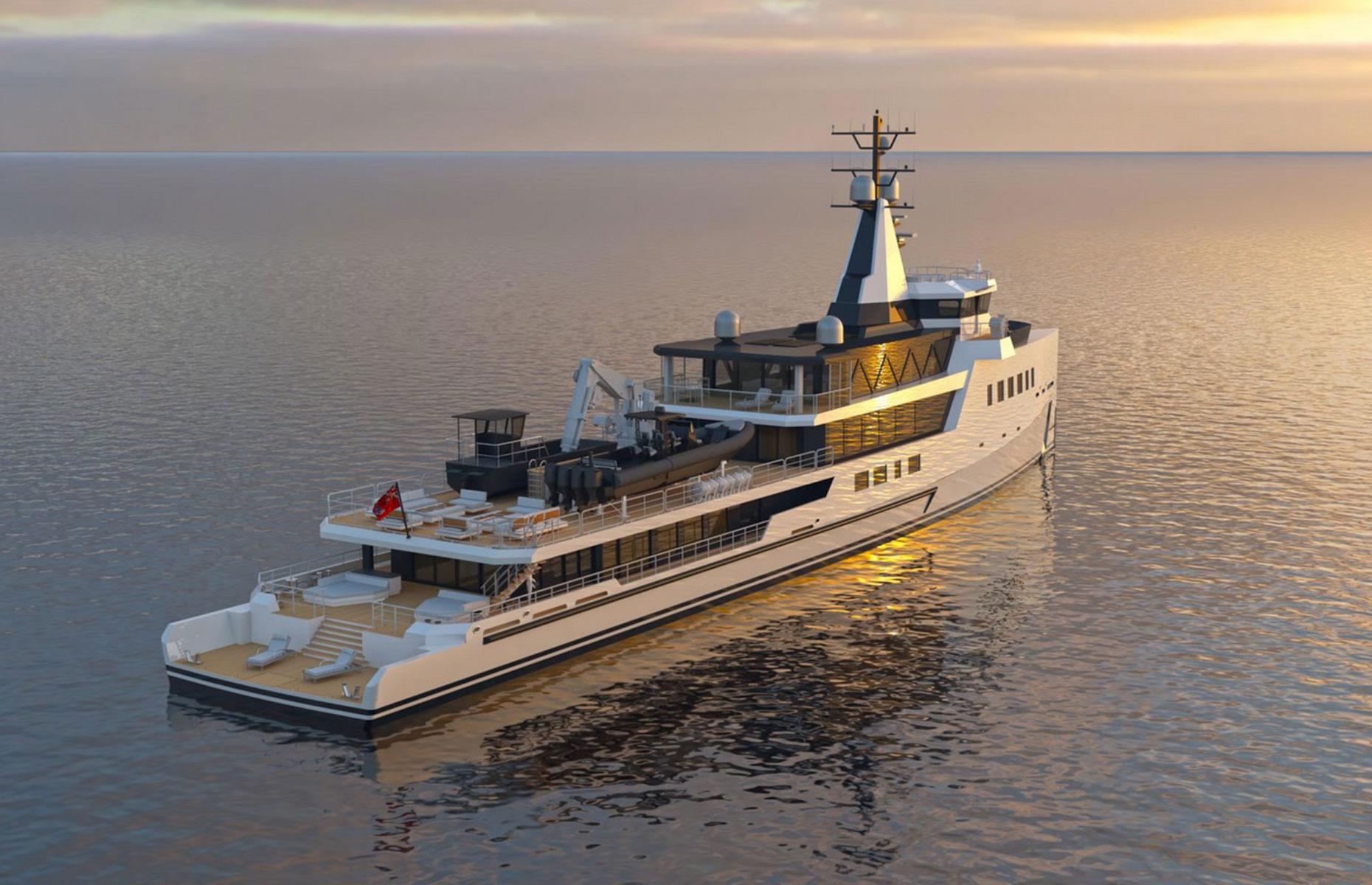
Designed by innovative London studio Michael Leach Design and engineered in-house, the 247-foot Custom YS 75 Hybrid has cutting-edge features, including a touch-and-go helipad and a crane for deploying tenders.
It can accommodate 24 crew members and up to 12 guests across six staterooms and boasts plush entertaining areas.
Due to launch early this year, the innovative vessel will also be the first private superyacht equipped with commercial-grade cultivation pods to grow vegetables, further adding to its eco credentials. As for the price tag? Damen is keeping it firmly under wraps...
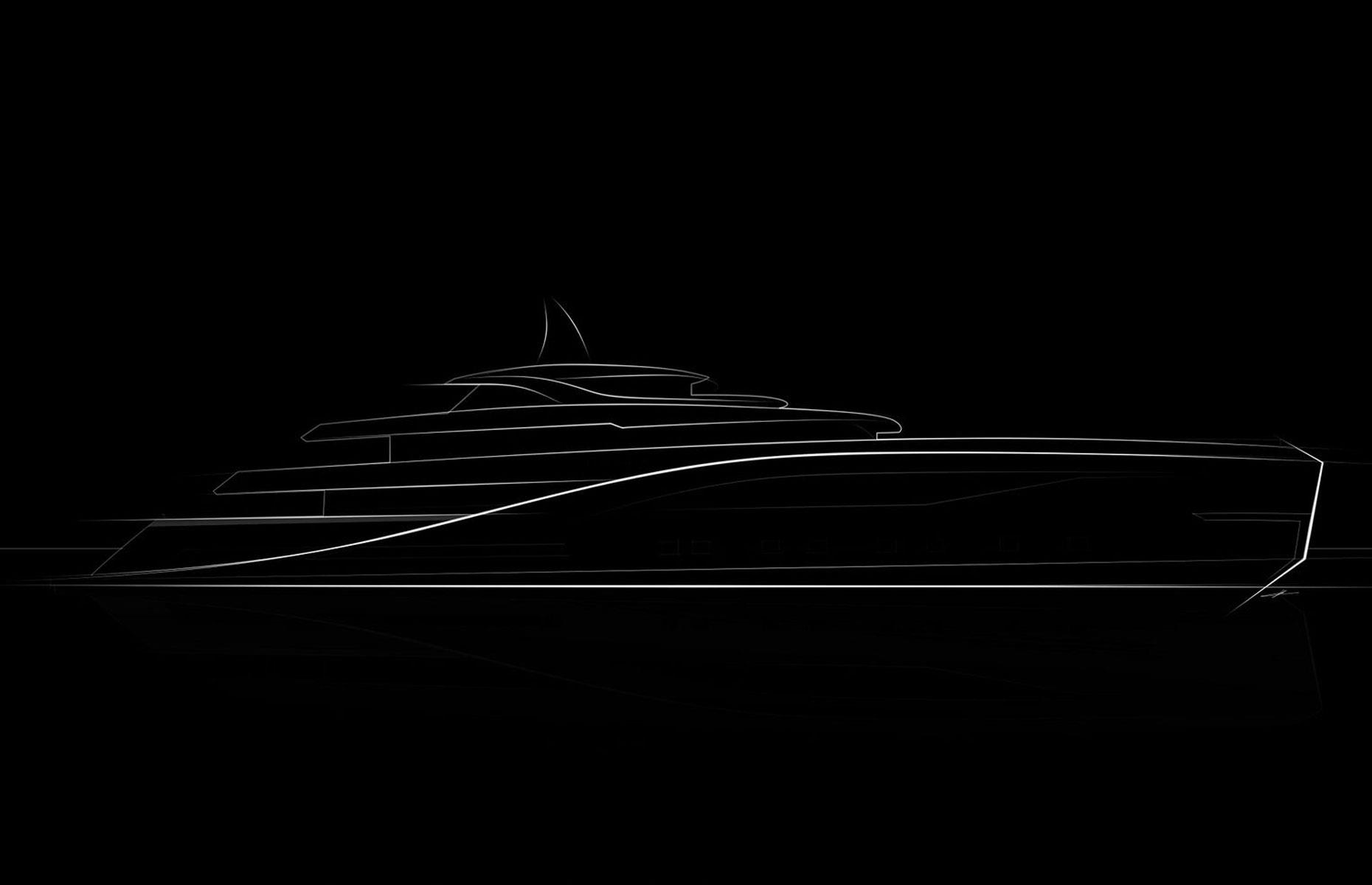
Blue Marlin and Custom 78: Cost unknown
Admiral Yachts, owned by The Italian Sea Group, is delivering two sensational superyachts this year, according to Boat International : the 256-foot Custom 78 a nd 253-foot Blue Marlin (pictured).
Sleek and elegant, Blue Marlin's exterior and interior are both the handiwork of prestigious Dutch studio Sinot Yacht Architecture and Design.
The superyacht accommodates 12 guests in six staterooms and offers them a wealth of amenities, including a 19-foot swimming pool, a private spa, and a helipad. Its more sustainable credentials include a lower-emission diesel-electric propulsion system.
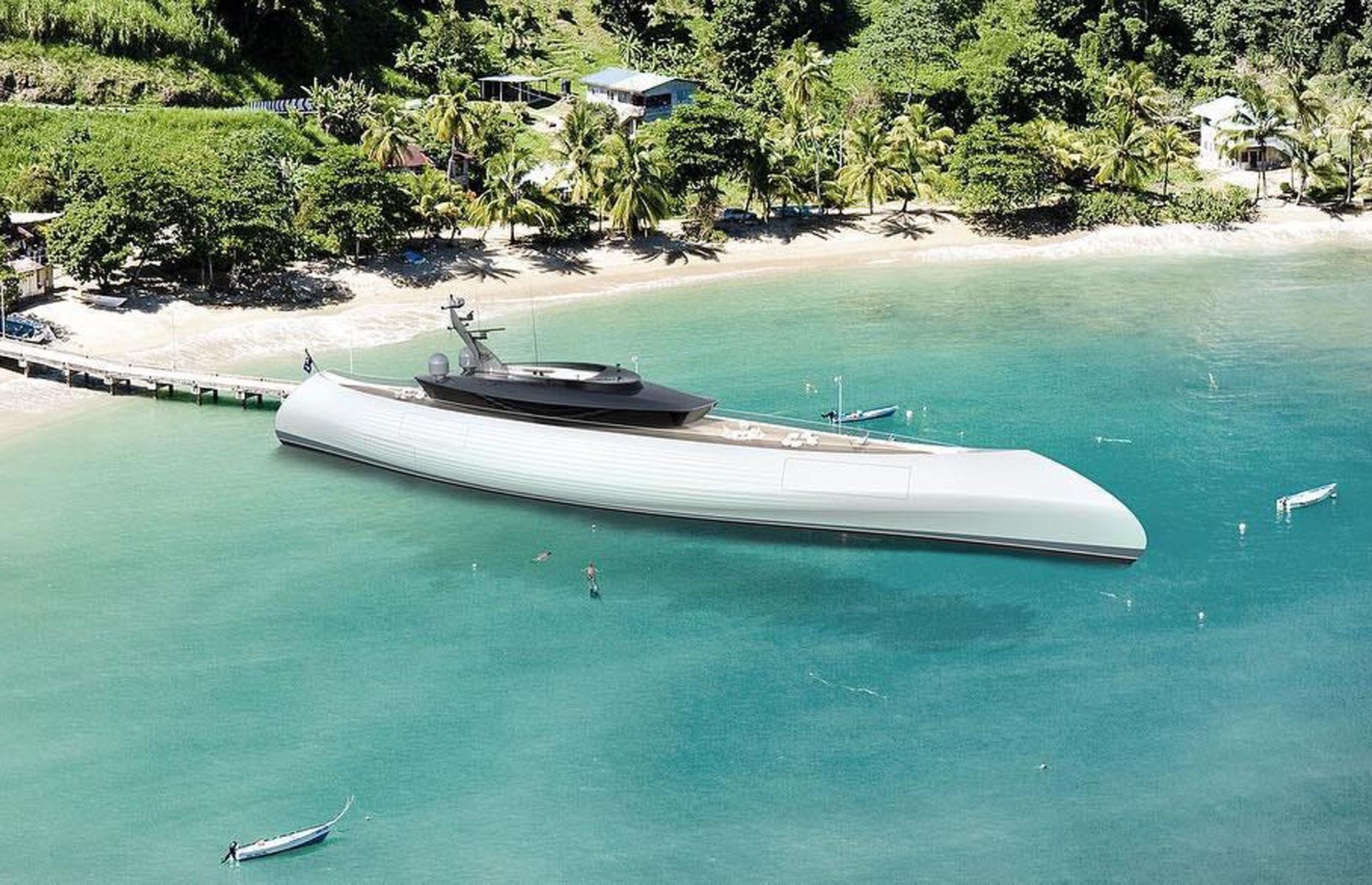
Precious little is known about Admiral's super-secretive Custom 78 project, as noted by Boat International .
It's known that the superyacht's exterior has been designed by Igor Lobanov, the Barcelona-based Russian nautical designer who's renowned for his futuristic, mega-streamlined creations. (An example of his work is shown here.)
Admiral has yet to disclose the price of either Custom 78 or Blue Marlin .

Project Toro: Cost unknown
Türkiye's Turquoise Yachts is getting ready to sign off the 259-foot Project Toro . It's actually running behind schedule and was supposed to be delivered last year.
With the exterior and interiors designed by British studio Harrison Eidsgaard – which is behind some of the world's most luxurious private jets, in addition to its portfolio of yachts – the end result will undoubtedly be a feast for the eyes.

Project Toro's neoclassical exterior is a real head-turner, while its interiors – which apparently include "a huge Neptune Lounge," to quote Super Yacht Times – have been described by the design team as "the definition of serenity and calm."
The fully customized beauty, which was sold in 2021 for an undisclosed sum, can comfortably fit 14 guests in its seven staterooms, as well as providing space for 21 crew members. Amenities onboard include a beauty salon, gym, and swimming pool.
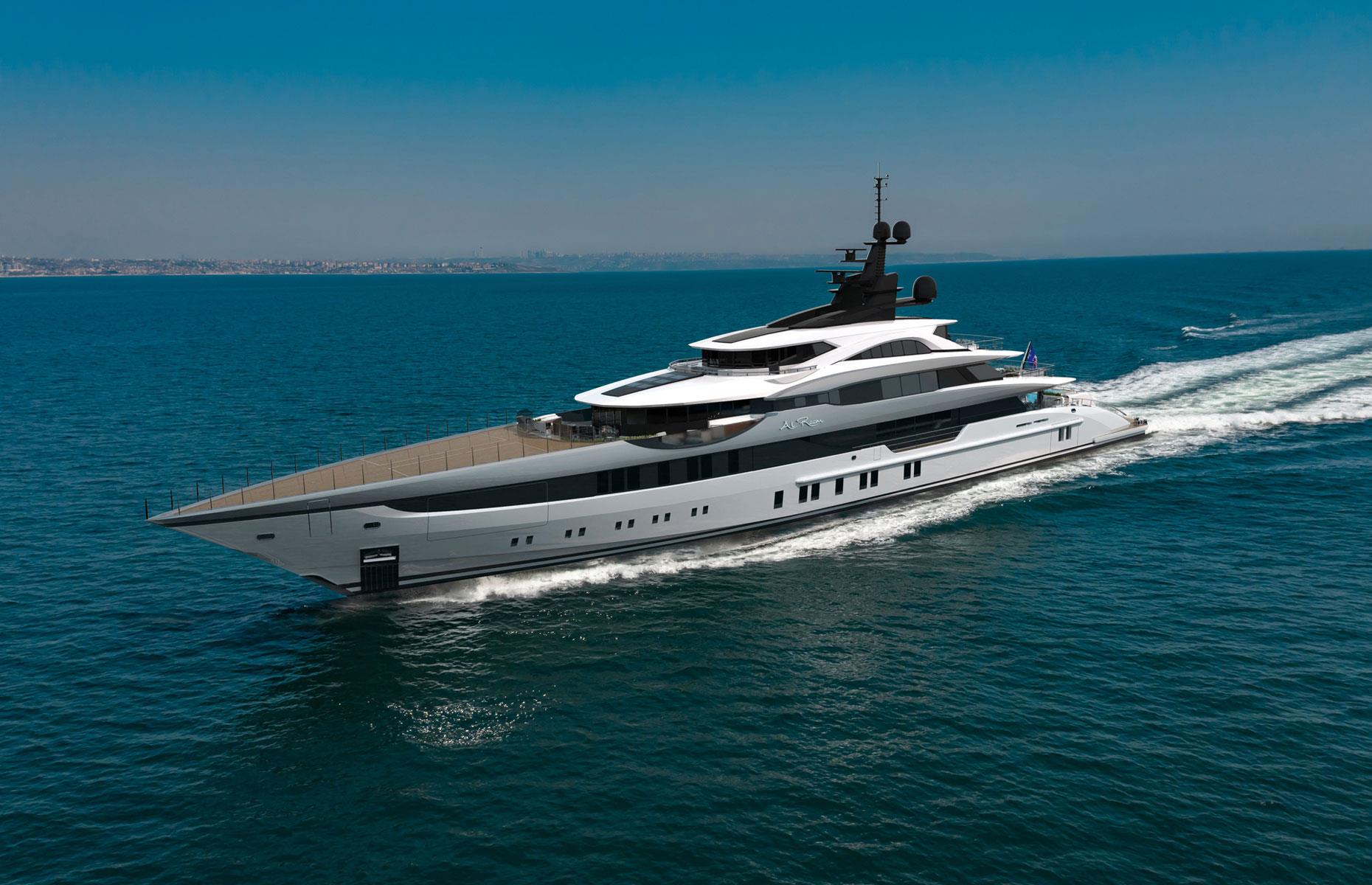
Al Reem: Cost unknown
Formally known as Silence , Al Reem is getting its finishing touches at the Bilgin shipyard in Türkiye's capital, Istanbul.
Spanning 263 feet, the superyacht showcases Bilgin's signature style – think razor-sharp exterior lines and a super-slender profile – with naval architecture by Turkish studio Unique Yacht Design. It's the third unit of Bilgin's 263 Series and the most advanced of the trio.
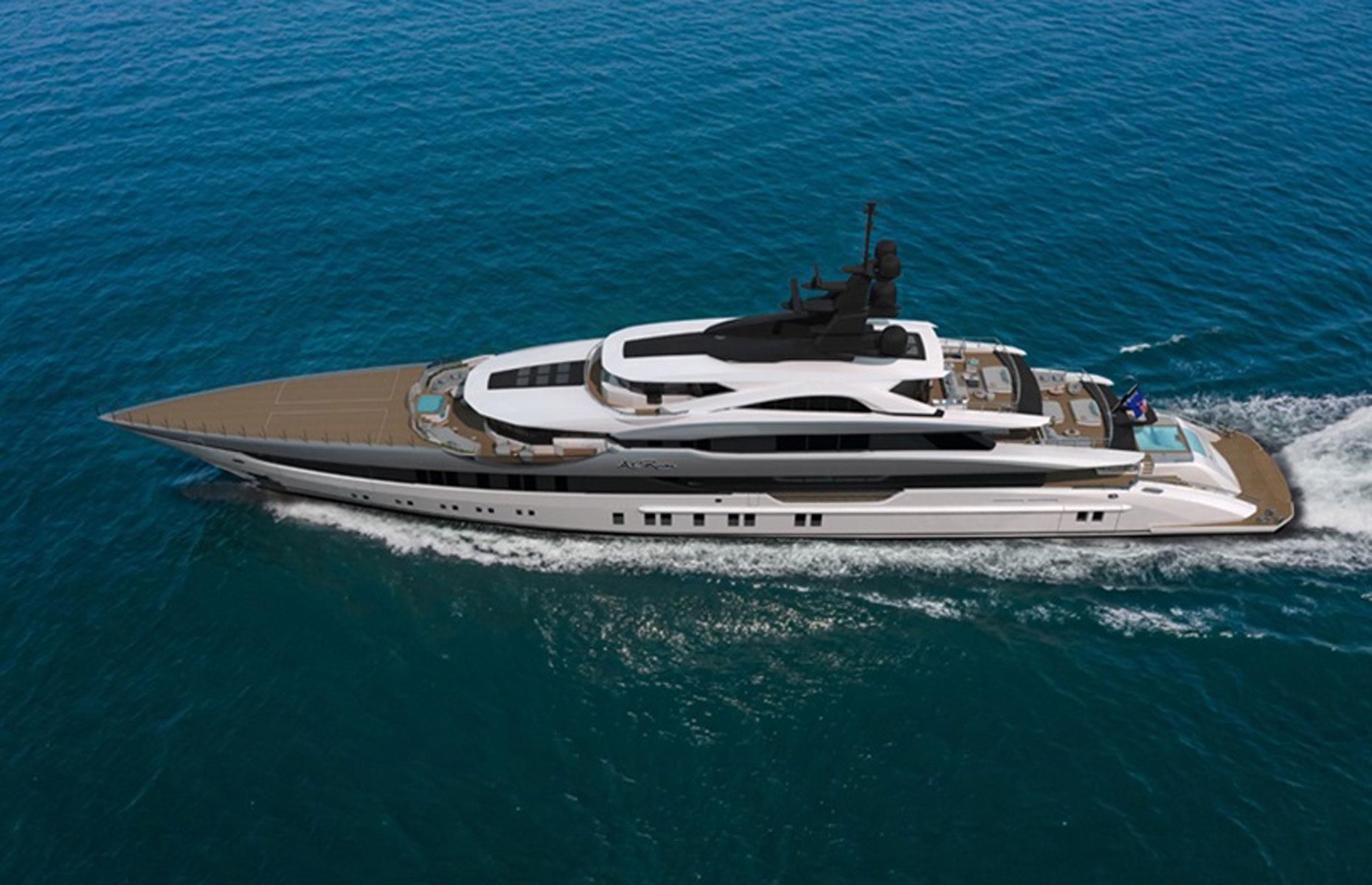
Silent by name, silent by nature: the superyacht was sold to a mystery owner in 2022 and the selling price hasn't been revealed. But it won't have come cheap, that's for sure.
Dreamed up by London's H2 Yacht Design, the modern interiors of the boat whisper quiet luxury. The eight suites (including three VIP cabins) can collectively accommodate up to 12 guests, and there's space for 18 crew members. Al Reem's amenities are top-notch too, with the beach club, gym, and movie theater just some of the standout features.

Project Vento: Cost unknown
Just weeks after Project Toro was sold in 2021, Turquoise Yachts found a buyer for Project Vento . As is the case with Project Toro , the identity of the owner and the price tag have not been divulged.
At 285 feet long, Project Vento is the largest superyacht ever built by Turquoise, with the company teaming up with long-time collaborator London's H2 Yacht Design to work on the boat's esthetics. The result? A distinctive two-tone white and blue exterior with soft, flowing lines.
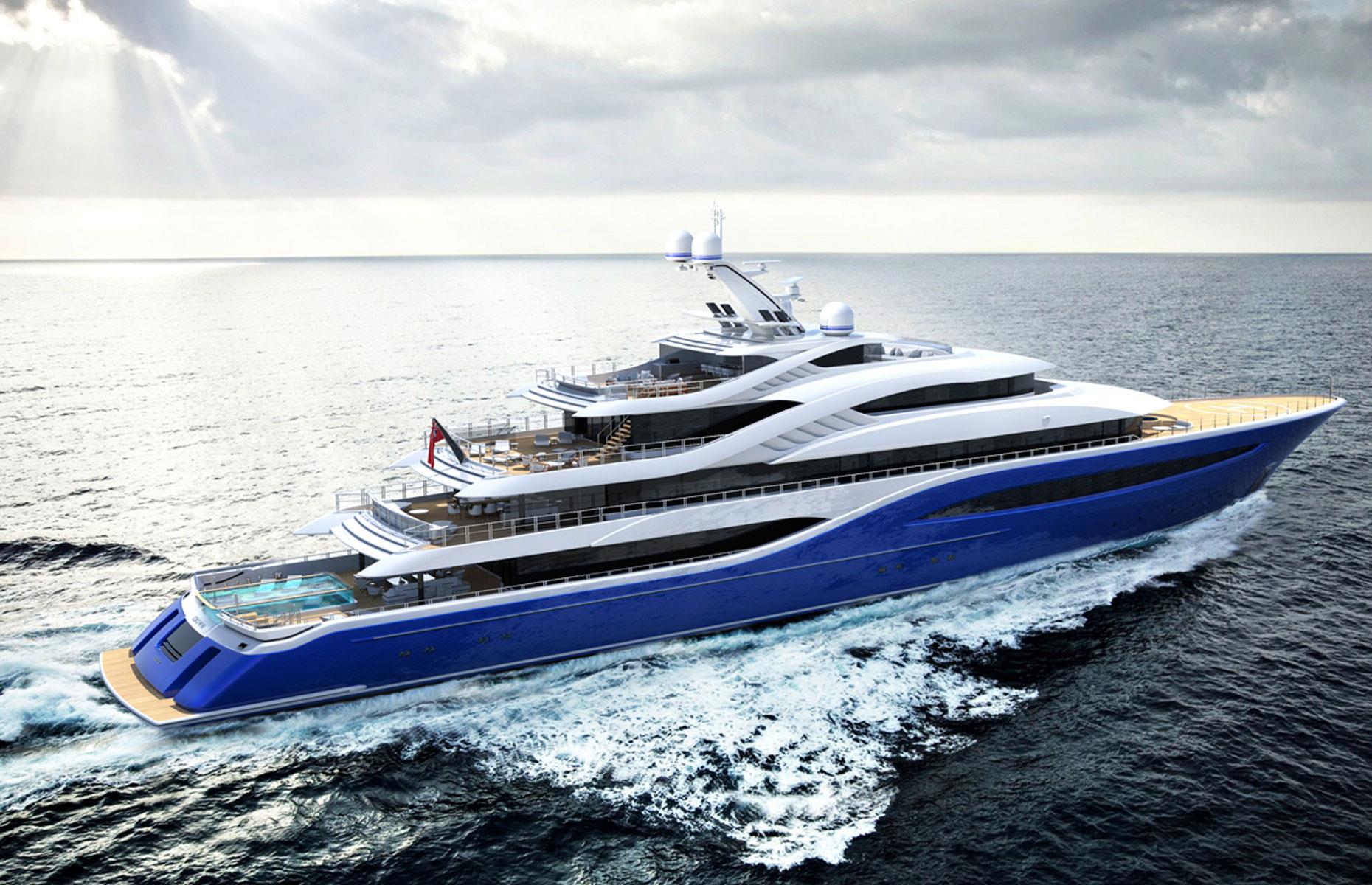
The interiors are just as eye-catching, with the superyacht boasting a wealth of features.
For the billionaire who has everything, there's a helipad that can also be used as an outdoor movie theater and basketball court. But the pièce de résistance has to be the incredible 21-foot glass-sided swimming pool on the lowest deck.
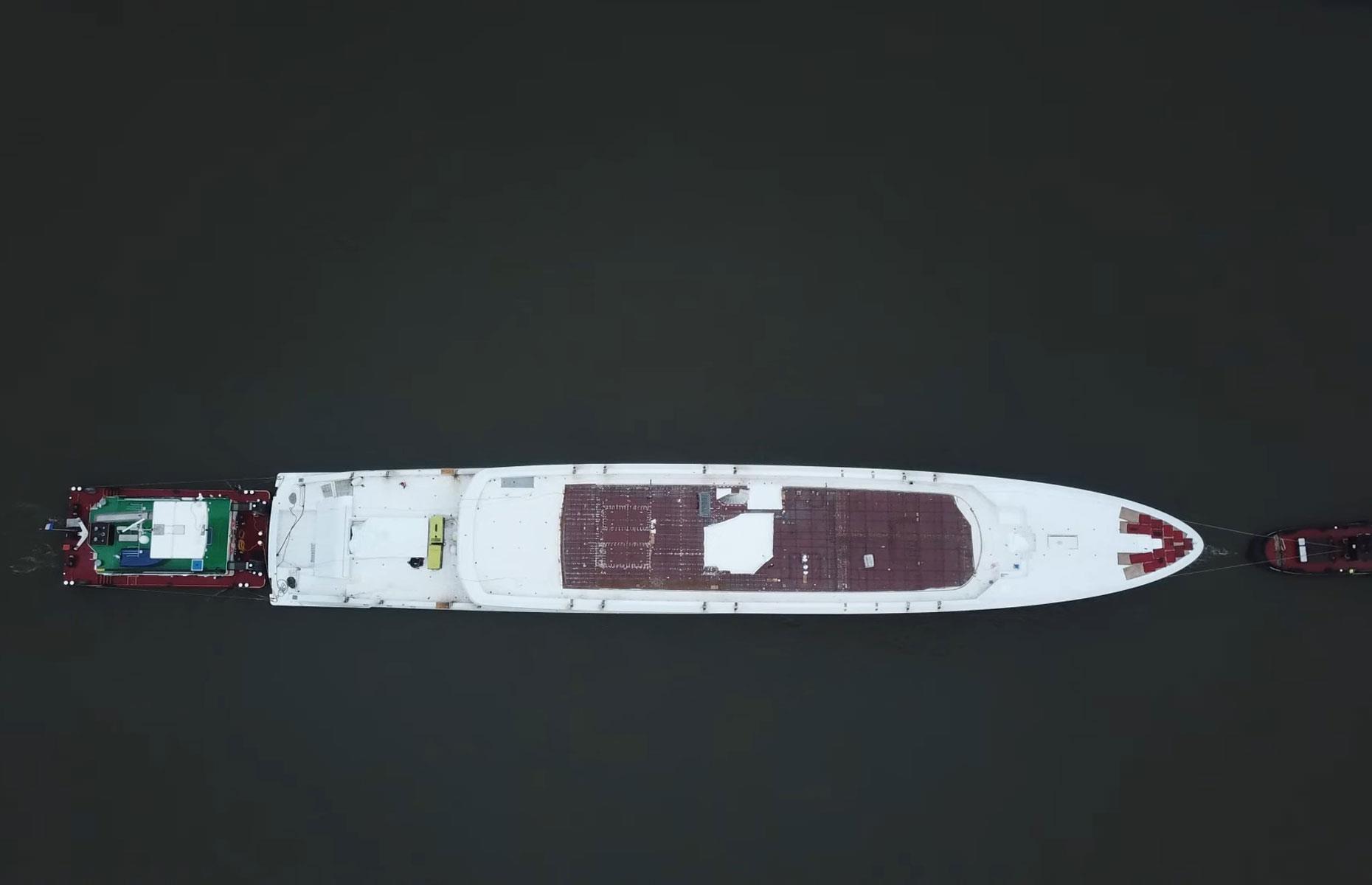
Project 1012: Cost unknown
With the venture cloaked in mystery, Feadship hasn't released any renders of Project 1012 and has yet to disclose information about the team behind it.
Based on images of the vessel undergoing trials in December 2022, Megayacht News has speculated that it could be traditional in design and may feature a beach club. However, these details won't be confirmed until the superyacht is delivered sometime this year – so watch this space...

Project 1012 is another Feadship superyacht that's slated for delivery in 2024.
The shipyard is being particularly secretive about the vessel, with details extremely sketchy. While we know that the superyacht is 300 feet long, further information about the vessel is next to non-existent.

Project JASSJ: Cost unknown
Spanning 338 feet, Project JASSJ is the third-largest of the show-stopping superyachts German shipbuilder Lürssen is delivering in 2024.
Sold in 2021 to an anonymous buyer for an undisclosed price, the superyacht features exterior and interior design by RWD Design. American firm Moran Yacht & Ship is overseeing the build.
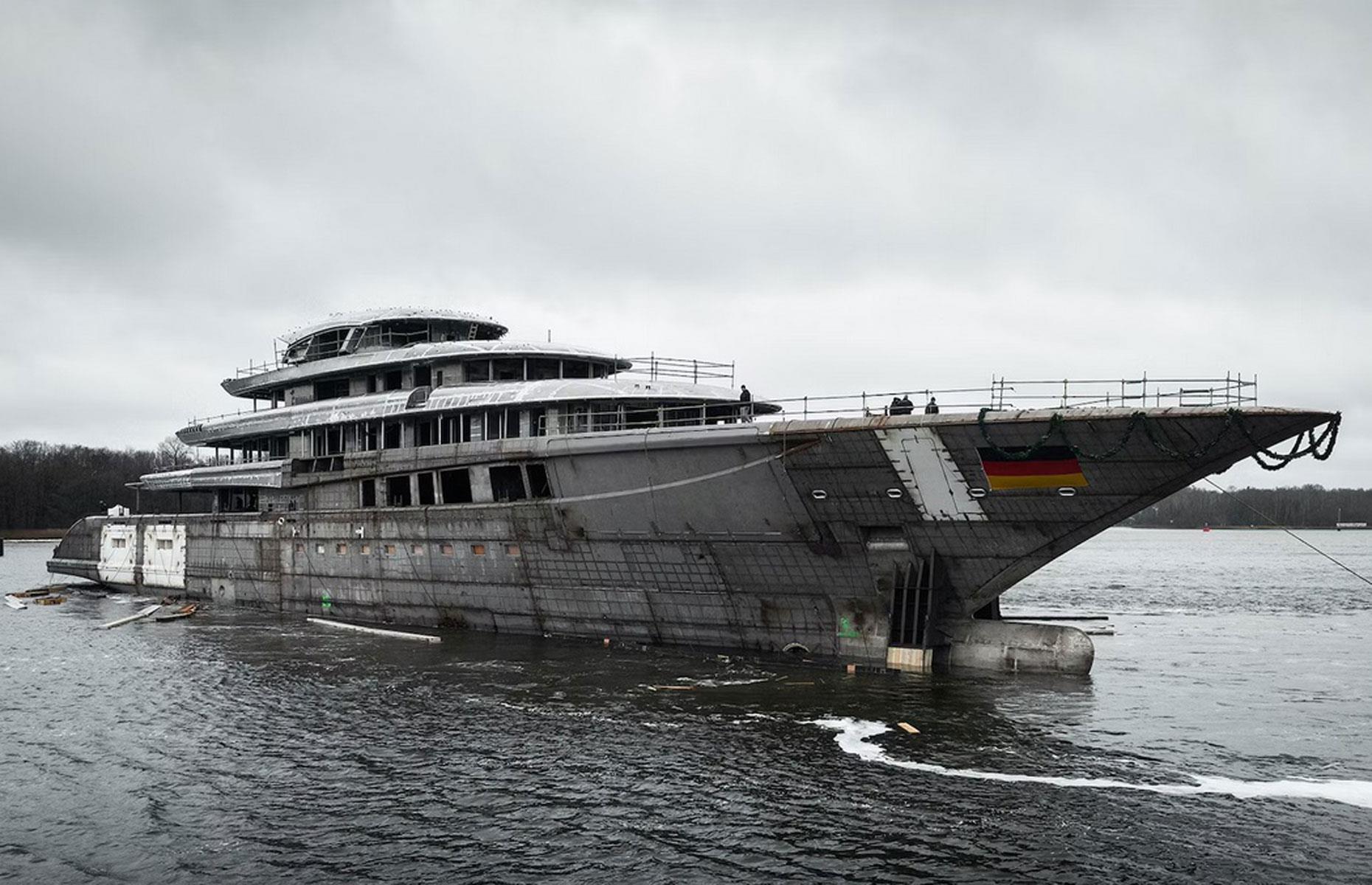
Fantastically spacious, Project JASSJ can accommodate 22 guests in 11 staterooms.
Lürssen isn't holding back when it comes to amenities, promising an "industry-leading" beach club, as well as a swimming pool, deck Jacuzzi, top-end gym, and elevator, along with a state-of-the-art helipad and side-opening tender garage.
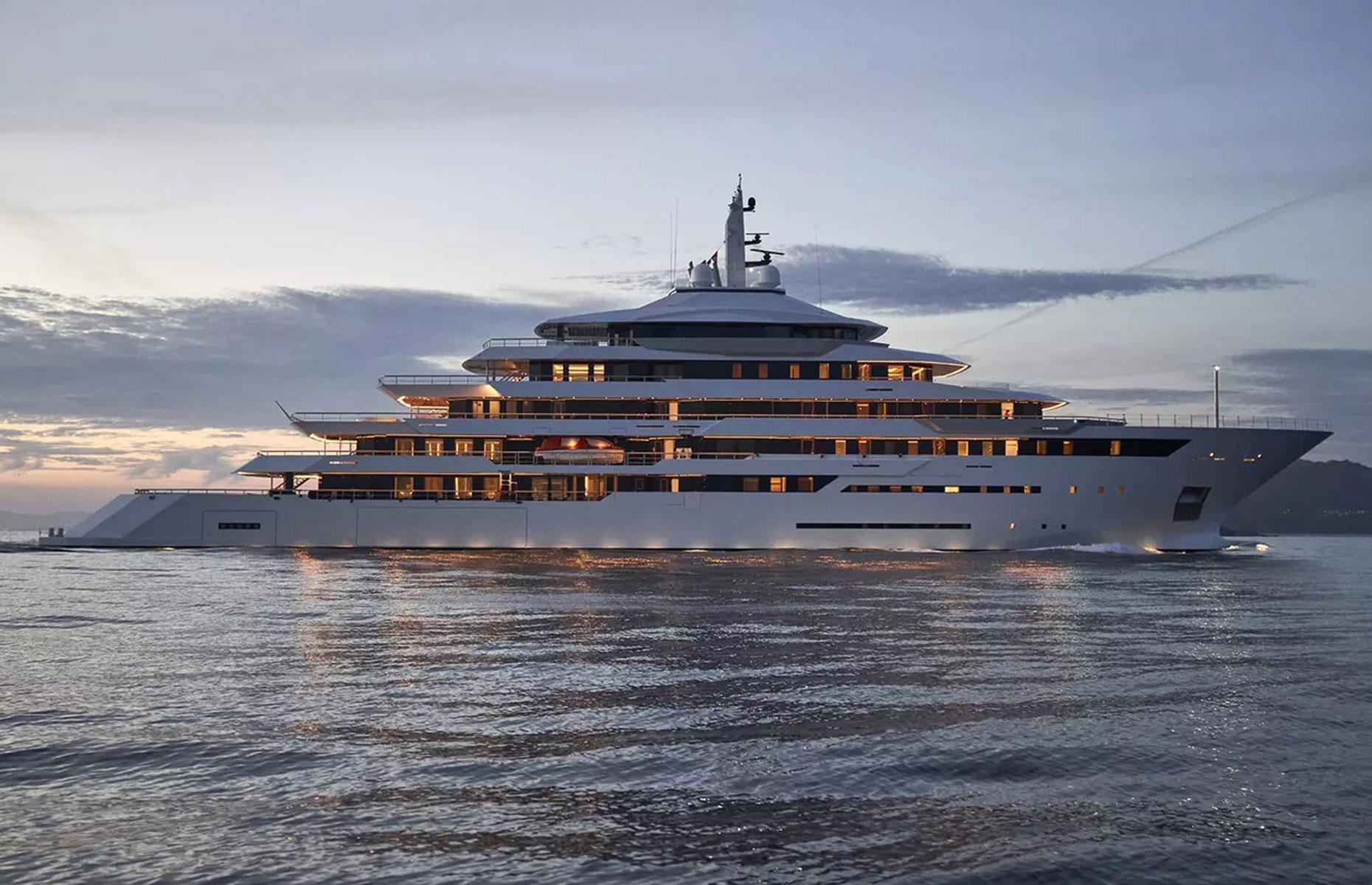
105 Explorer (NB-729): Cost unknown
Hot on the heels of delivering the 367-foot Renaissance (NB-724) , the largest ever yacht crafted in Spain (and shown here in all its glory), Freire's Galician shipyard is set to complete another whopper: 105 Explorer (NB-729) , which comes in at 344 feet.
Renaissance has been described by Burgess Yachts as a "temple of leisure" and "sanctum of tranquillity." But 105 Explorer (NB-729) is more about adventure than relaxation...
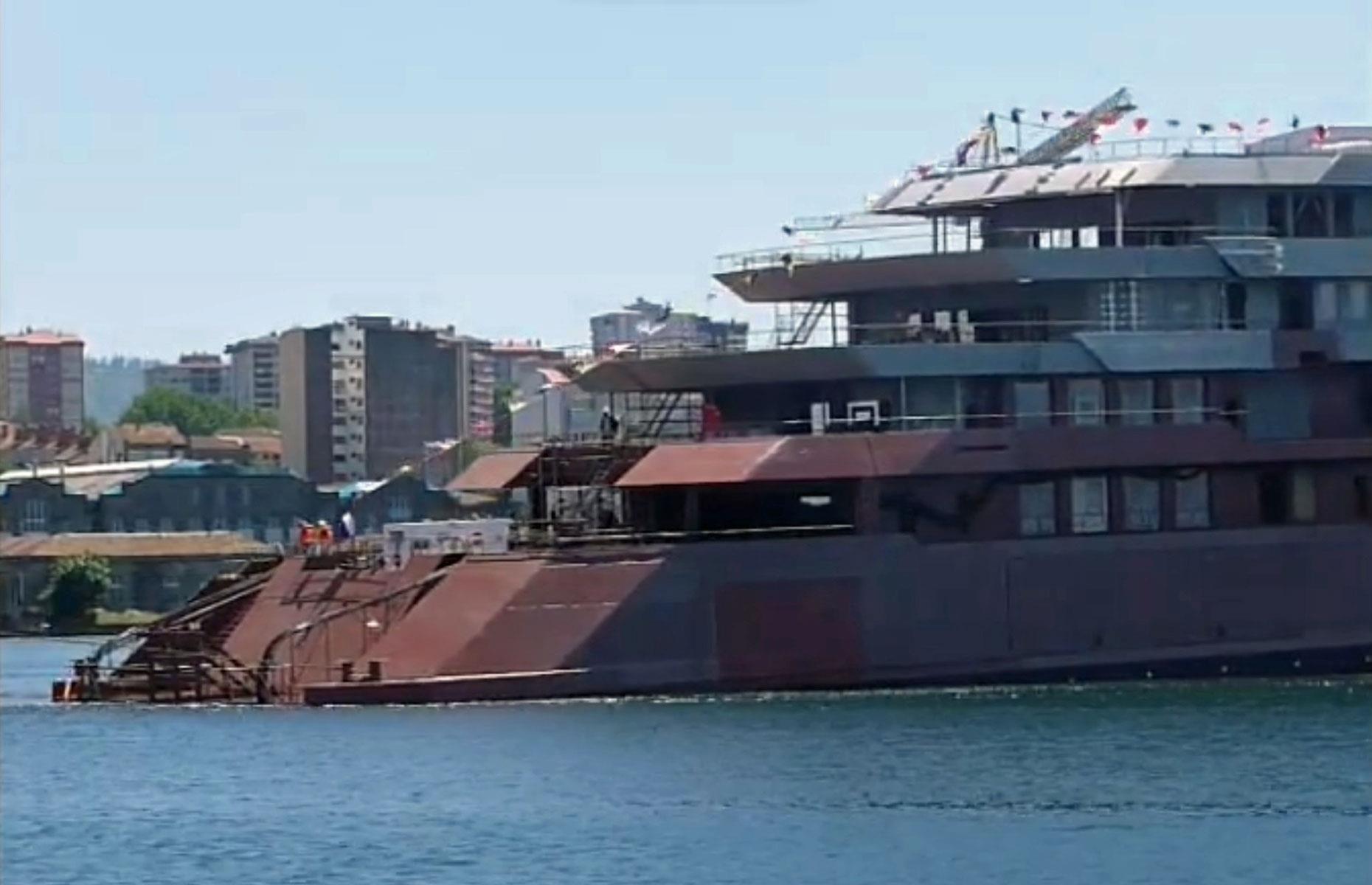
The superyacht may be kitted out with all the classic creature comforts but, as a roving expedition vessel, the emphasis is on performance rather than amenities.
Reflecting other high-end shipbuilders, Freire has chosen to keep the price of the superyacht a secret in the interest of client confidentiality.
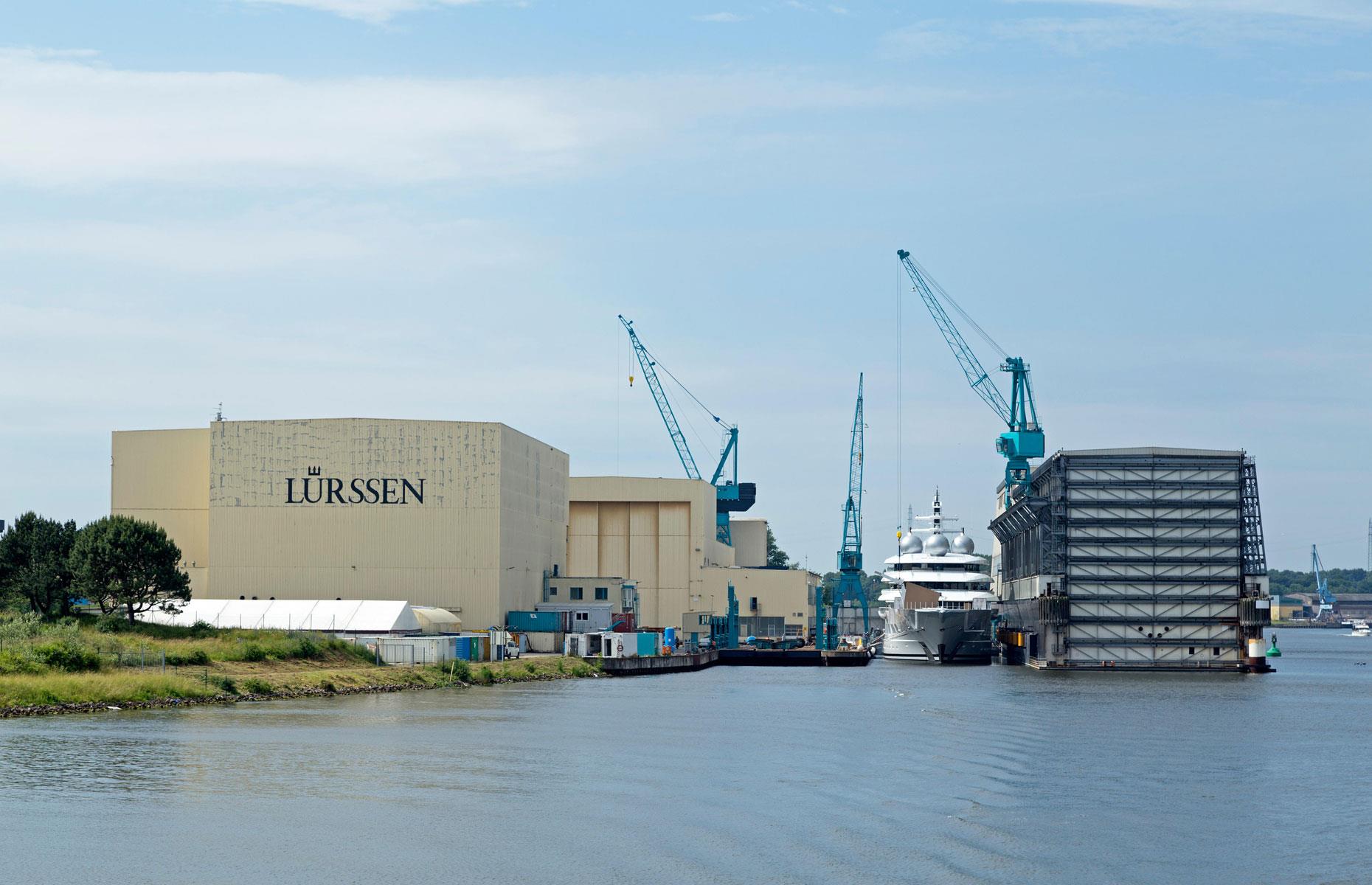
Ace 21: Cost $150 million
Ace 21 is one of four show-stopping superyachts that Germany's Lürssen is delivering this year.
Extending over 256 feet end to end, the glamorous vessel spans five decks – the superyachts we've covered so far have just four – and has been designed to provide five-star relaxation in the world's most idyllic locations. It can accommodate up to 14 guests and a crew of 24.
Lürssen, which has taken care of the naval architecture, has reportedly designed the superyacht so it can cruise closer to shorelines and dock alongside paradise-style beaches and coves.
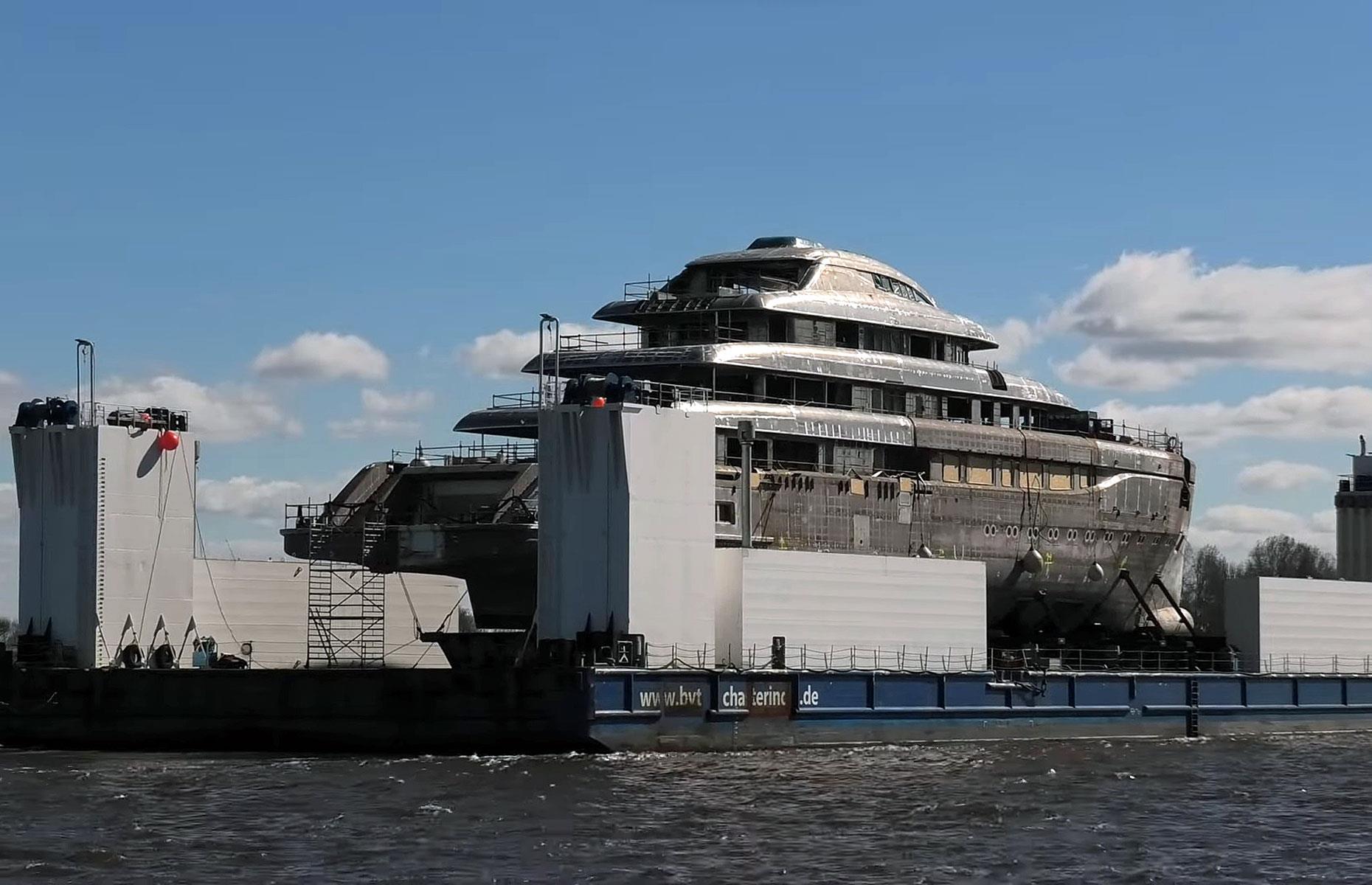
Ace 21 is all about relaxation – and its designated wellness zone, complete with an extensive spa, beach club, and deck Jacuzzi, combine to make it the perfect place to kick back, millionaire style.
SuperYachtFan reports the vessel was ordered by an unnamed individual who's said to be a prominent figure in the yachting world. The site pegs Ace 21 's price tag at $150 million and estimates annual running costs could stretch as high as $15 million.
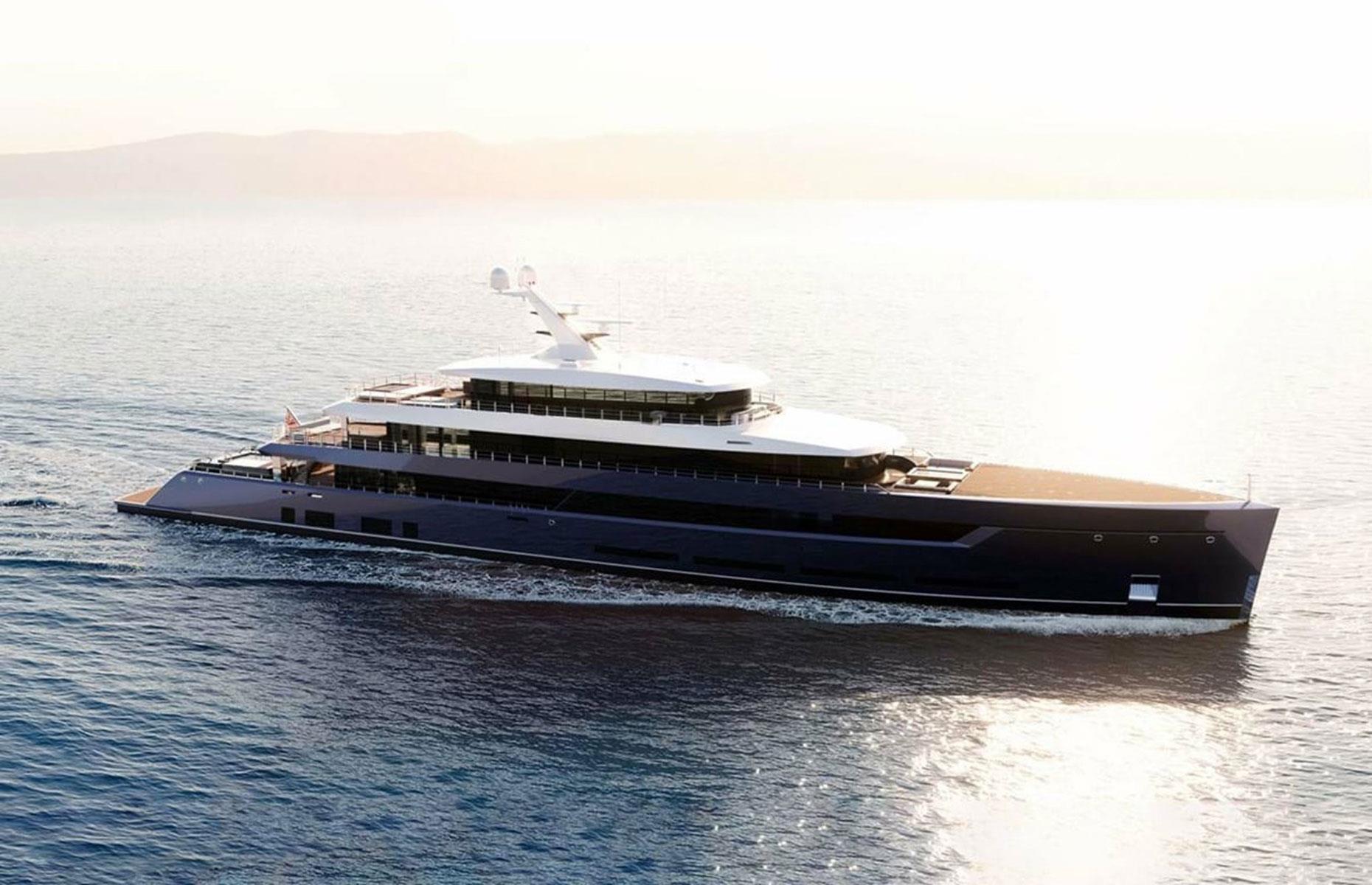
Project 825: Cost $186 million
On the other hand, the asking price for Feadship's Project 825 has been revealed.
Due for delivery later in the year, the 249-foot superyacht is currently available for $186 million via Burgess Yachts.
Newly-built vessels of this size and caliber are usually custom orders, so it's rare for one to come on the market. The yacht is likely to be snapped up by a member of the super-rich elite who doesn't have the patience to wait years for a bespoke job .
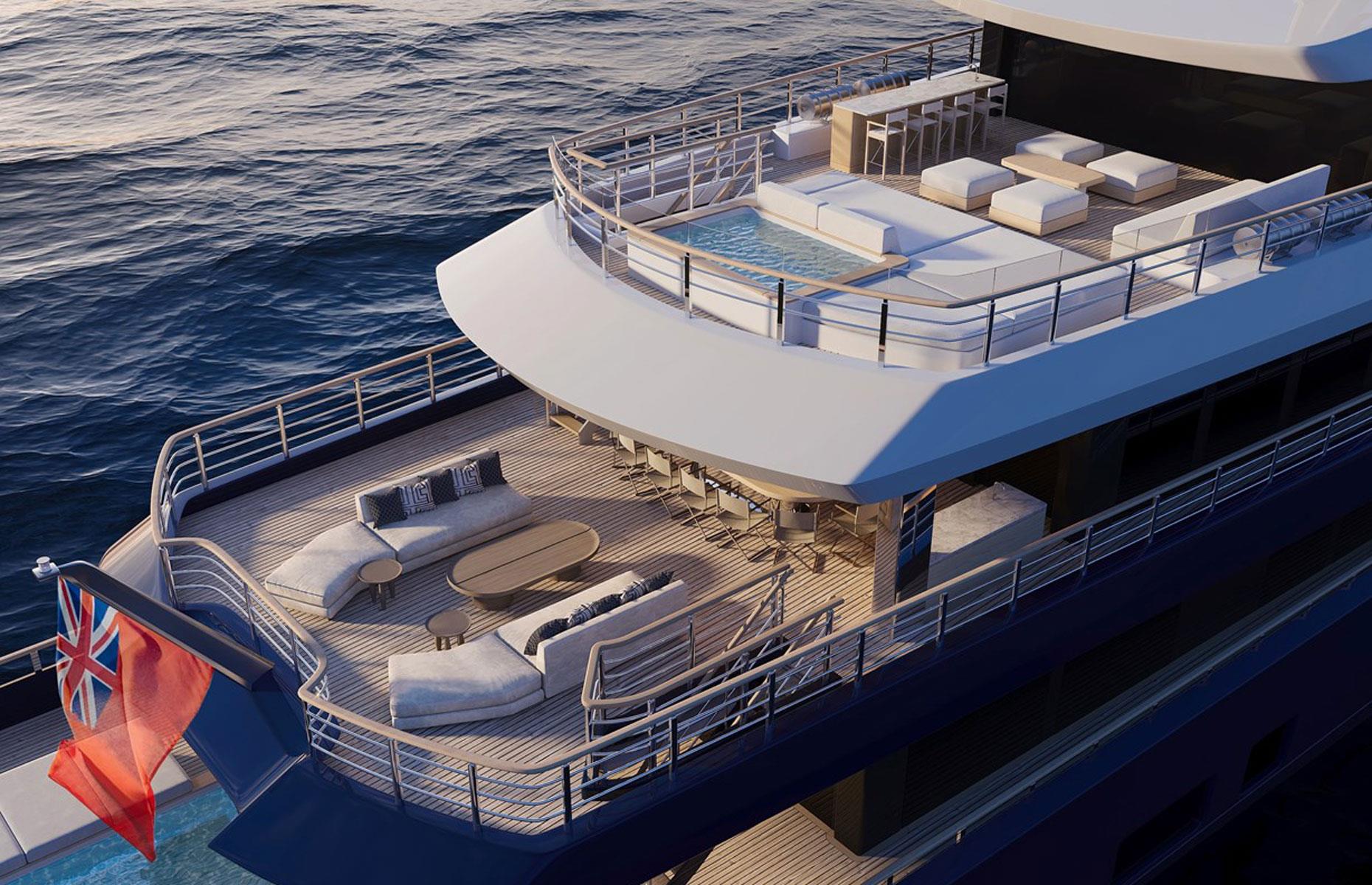
The turnkey superyacht, which is getting its finishing touches at the Feadship Royal Van Lent shipyard in the Netherlands, has a slick two-tone exterior by Feadship's De Voogt Naval Architects. Its chic interiors are courtesy of Parisian design house Gilles & Boissier.
Project 825 has six staterooms with space for 12 guests, who'll have their every whim catered to by 17 crew members. Among its key selling points are an awesome glass-bottomed swimming pool and a private VIP terrace that boasts its own Jacuzzi.
There's also a sauna, deck gym, games room, and touch-and-go helipad, as well as an elevator.
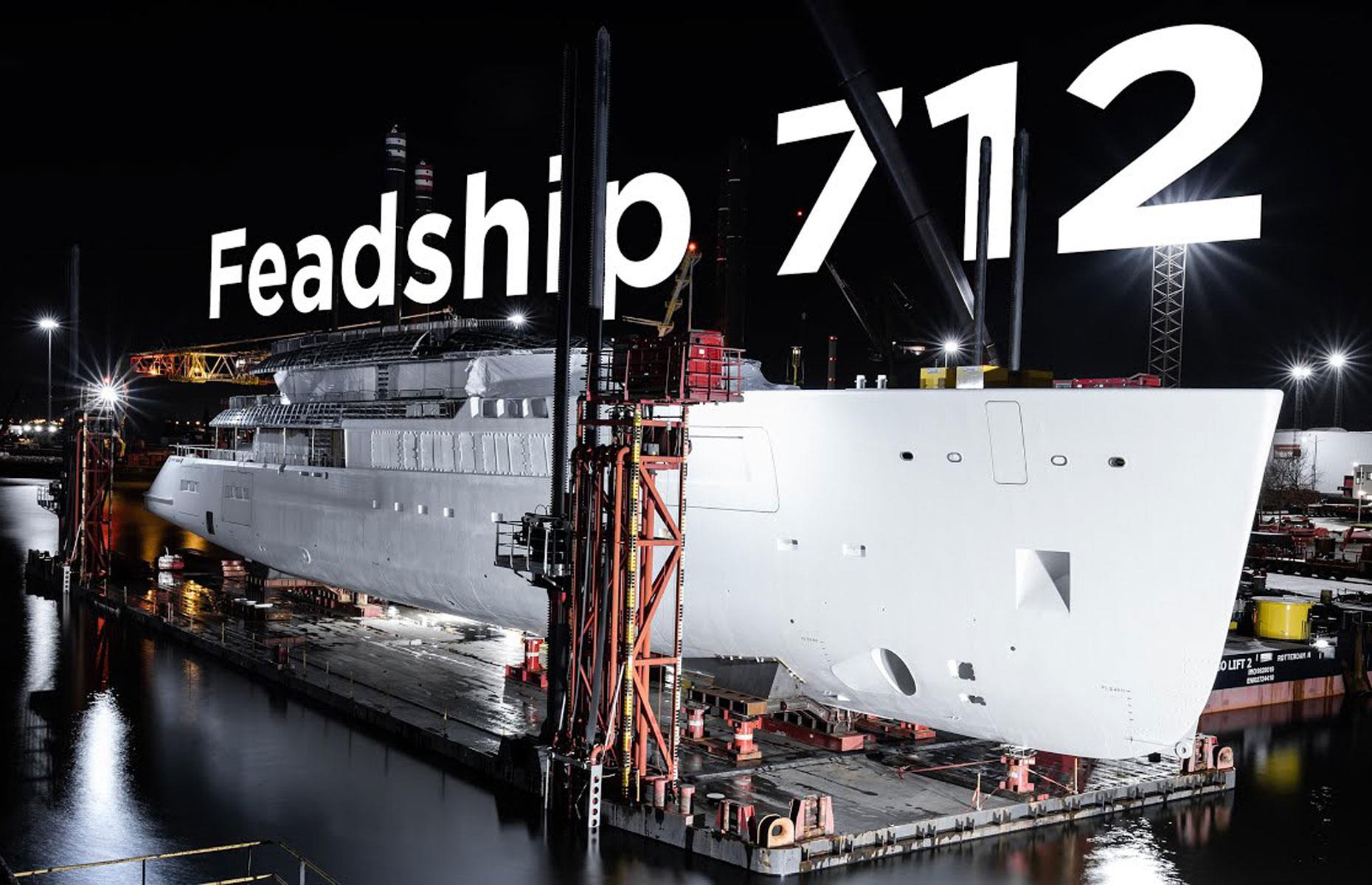
Project 712: Cost $200 million+
Feadship is practically churning out superyachts at the moment, with multiple deliveries scheduled this year. Project 712 is among them.
The 272-foot vessel features an exterior design by Feadship's De Voogt Naval Architects. Unlike the aforementioned Project 825 , however, the interiors are the work of top Dutch firm Sinot Yacht Architecture & Design, not French studio Gilles & Boissier.

Because Feadship is selling Project 825 , the price has been revealed – but Project 712 's cost is being kept firmly under wraps. Given its larger dimensions, it's likely to be even more expensive than its sister vessel.
The superyacht has space for up to 10 guests across its five cabins, according to YachtCharterFleet, and comes equipped with a wealth of billionaire-worthy amenities, including a beach club, a gym, and a deck Jacuzzi.
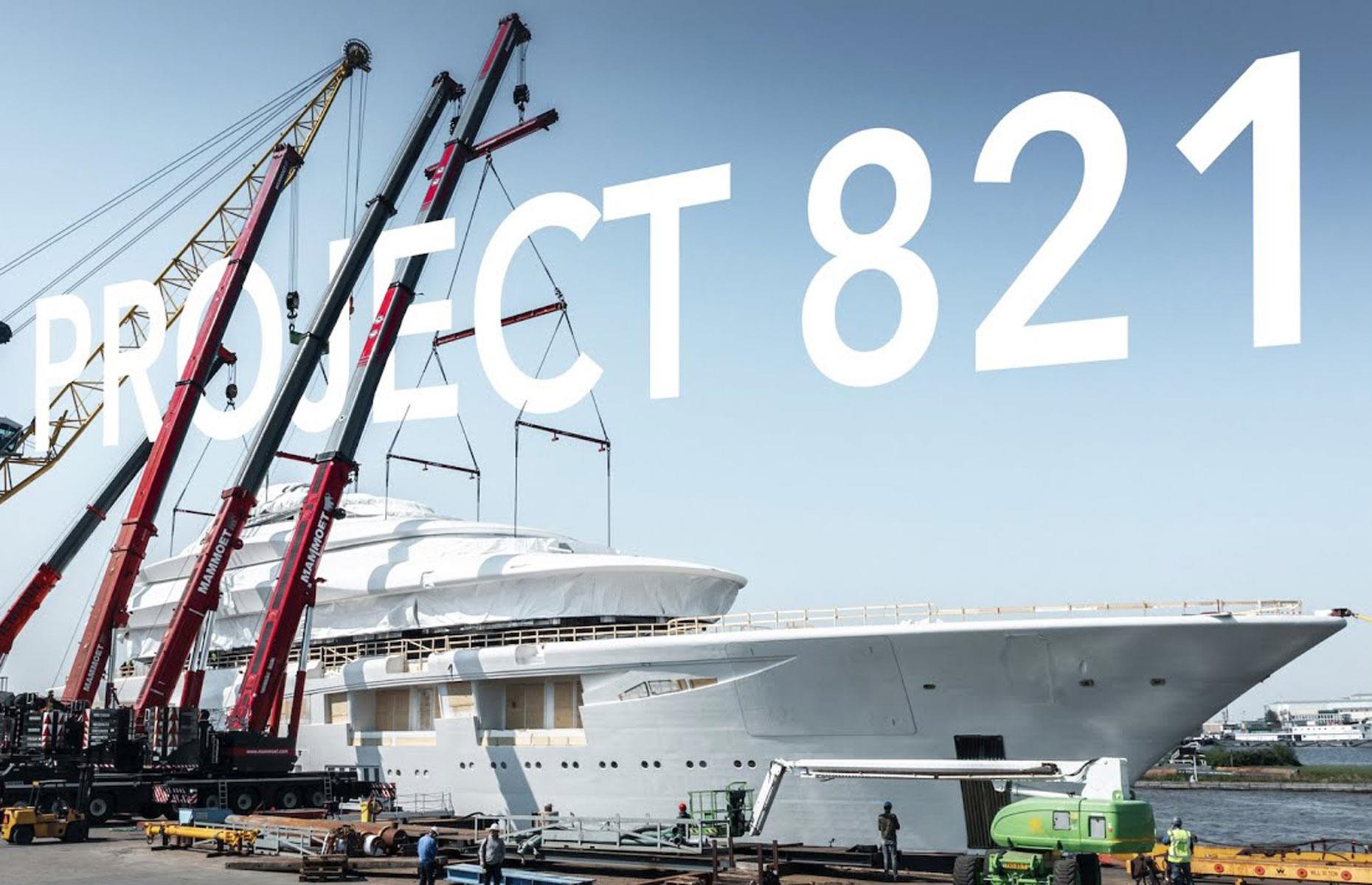
Project 821: Cost $200 million+
The biggest Feadship superyacht launching this year – not to mention the largest the Dutch company has ever built – is Project 821 , which spans 390 feet.
Feadship is being as secretive about this superyacht as it is with Project 1012 , with very few details known about it.
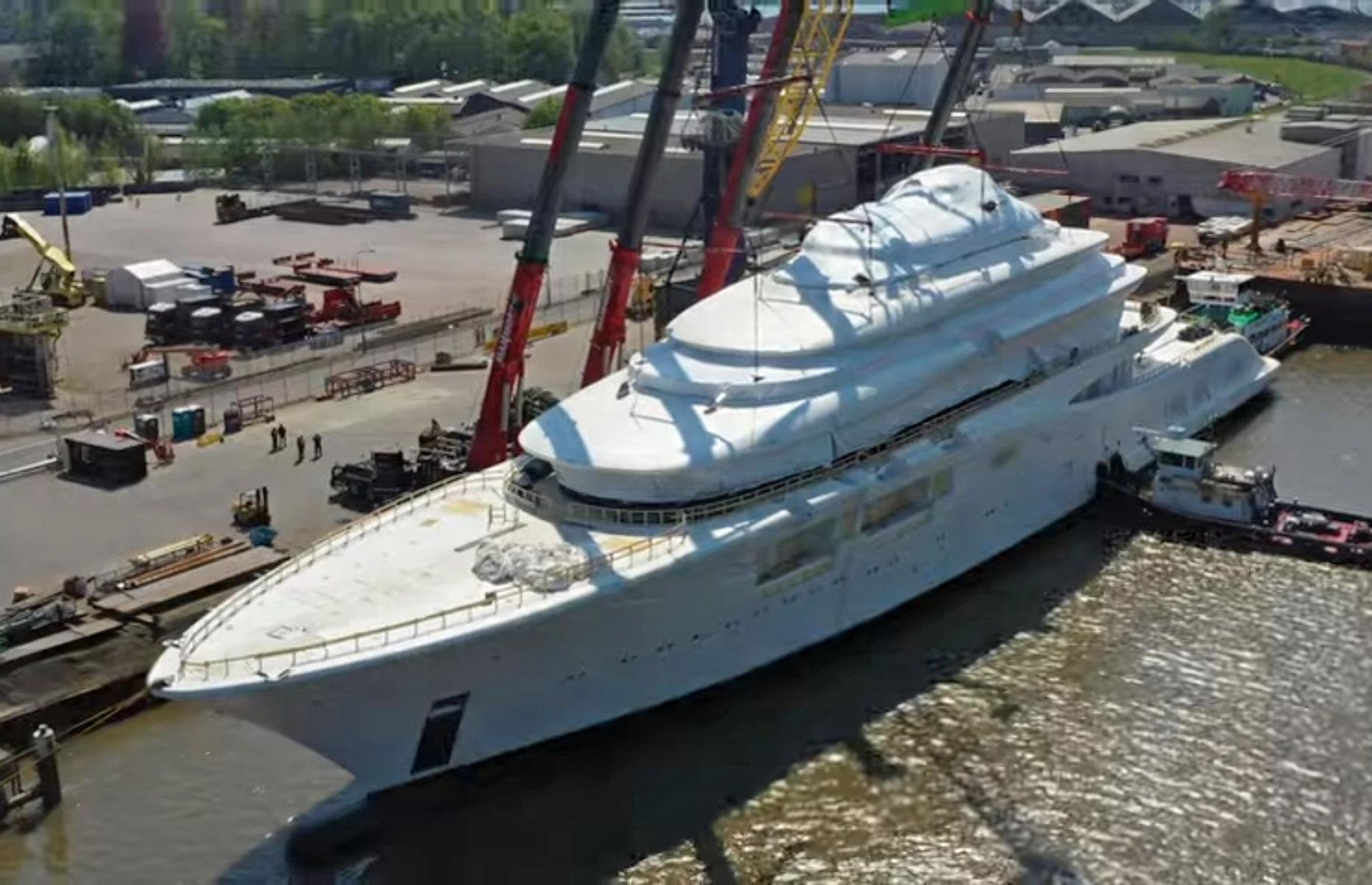
The exterior design is characterized by soft lines, and there's a capacious beach club to the rear of the superyacht that leads down to a swimming platform... And that's all we know.
Both the buyer and the price of Project 821 are being kept hush-hush, though the superyacht is likely to have cost considerably more than the smaller Project 825 , which is on the market for $186 million.

Project Deep Blue: Cost $450 million
The second-biggest of Lürssen's four superyachts expected to launch this year, Project Deep Blue may not be delivered to its owner until 2025, according to several expert forecasts.
Details about the project are scant. Even the final length of the superyacht is uncertain, but it's believed to measure at least 427 feet.
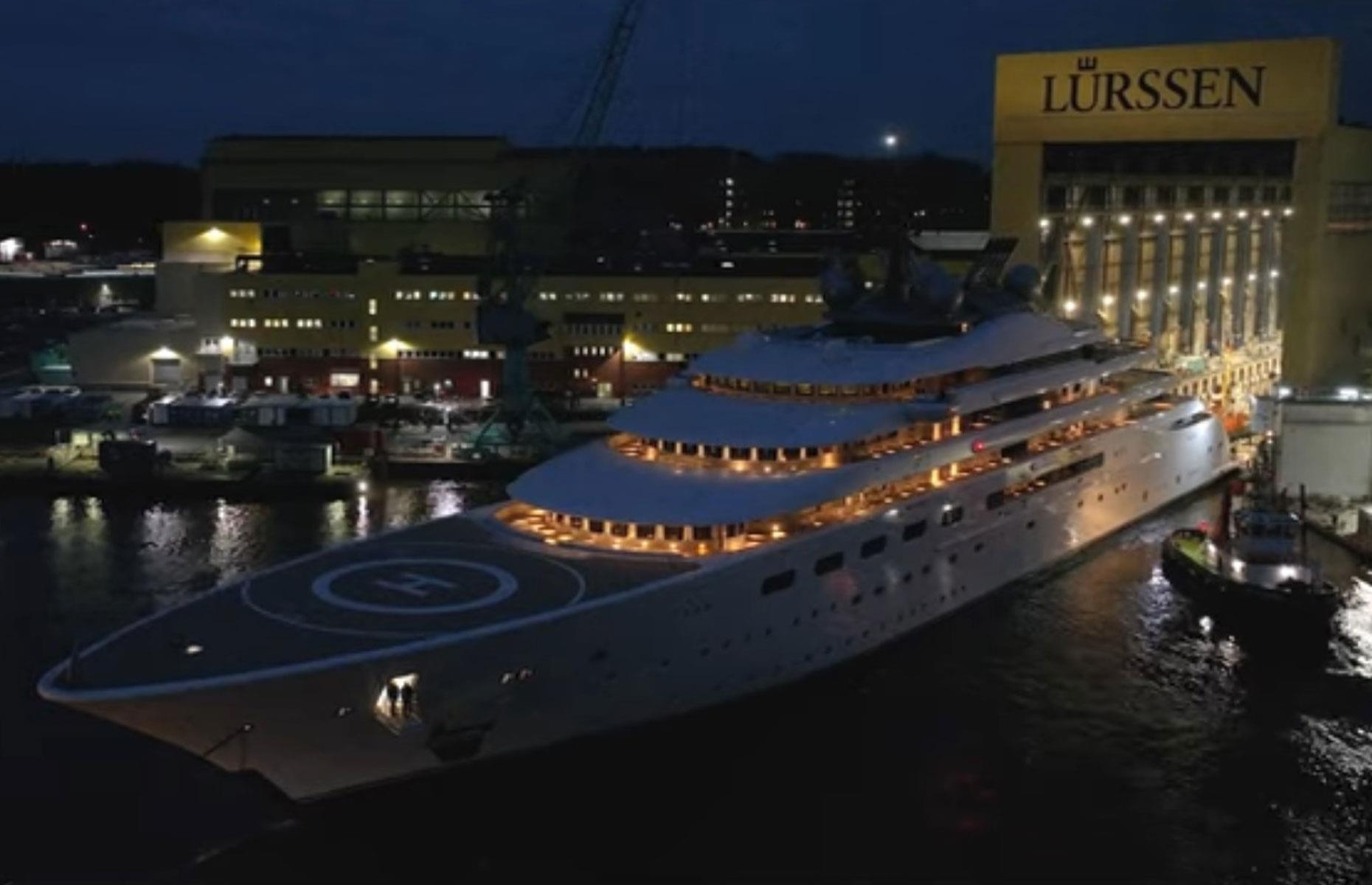
No doubt the owner is delighted with the sophisticated exterior design, which bears similarities to Lürssen's Ahpo (now named Lady Jorgia).
SuperYachtFan reports Project Deep Blue is expected to accommodate 24 guests and a crew of 45. It estimates the vessel would cost a staggering $450 million, with punishing yearly running costs of $45 million. The website has vaguely identified the owner as an Indian or Chinese billionaire.

Project Luminance: Cost $500 million (£392m)
The biggest of Lürssen's four show-stopping superyachts hitting the water in 2024, Project Luminance spans a whopping 475 feet, making it almost as long as three Olympic-sized swimming pools.
The superyacht was originally slated for completion last year, but the delivery date has since been put back. A masterpiece of nautical design, Project Luminance wows thanks to its exterior by Monaco-based Espen Øino and equally elegant interiors by French studio Zuretti Interior Design.

Project Luminance is estimated to accommodate as many as 24 guests across 12 opulent staterooms. Amenities are fantastically lavish, with the vessel reportedly boasting two helipads and a massive swimming pool, which comes complete with an adjacent dip pool.
Reported to cost in excess of $500 million, Project Luminance was commissioned by Rinat Akhmetov, the richest person in Ukraine.
A report in The New York Times in 2022 suggested Akhmetov was considering selling the vessel in light of Russia's invasion of his home country. Still, it appears the billionaire might have decided to keep it for now. And who can blame him?
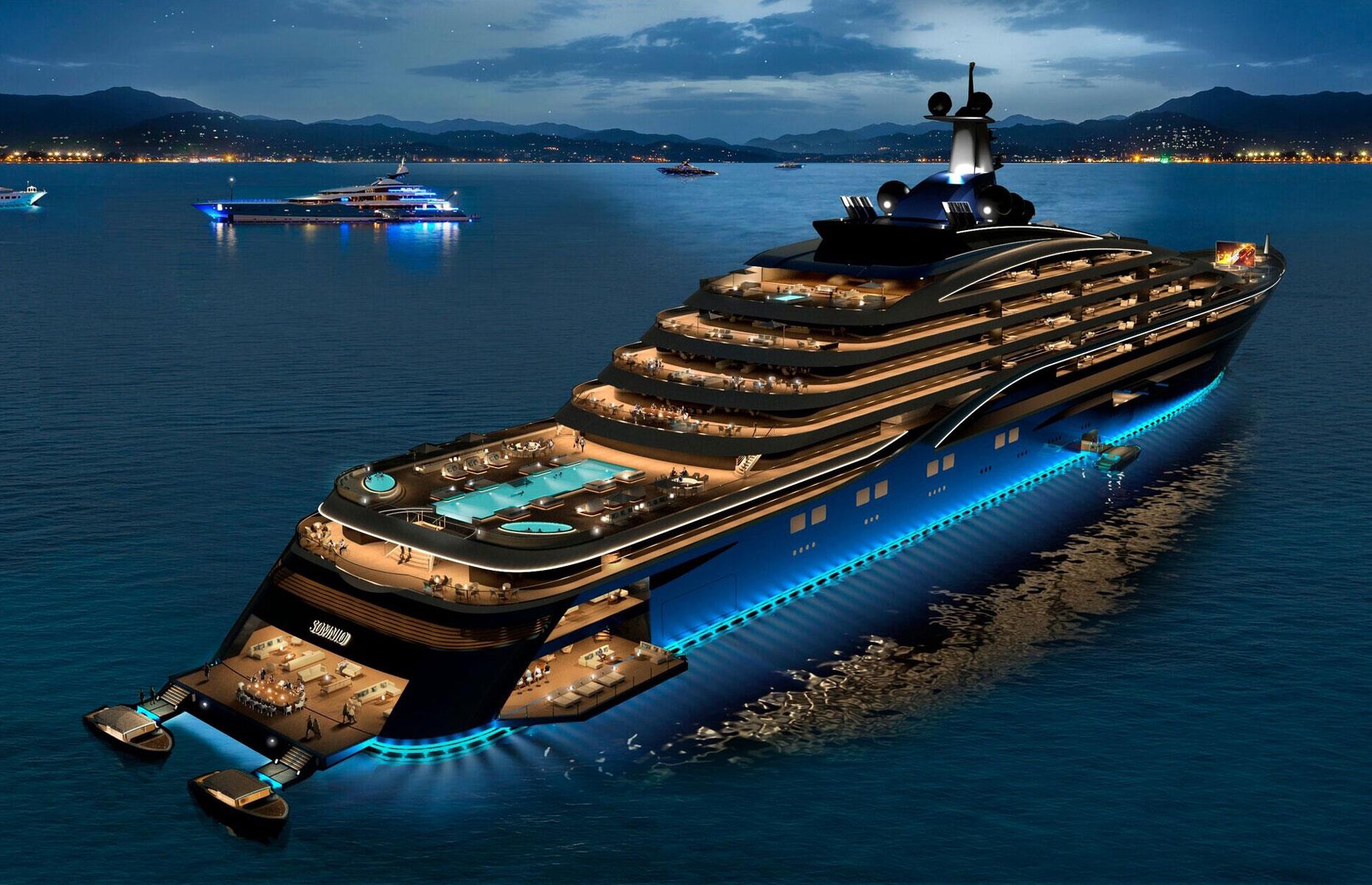
Somnio: Cost $600 million (£470m)
Putting this year's other launches firmly in the shade, Somnio spans a colossal 728 feet, making it the largest superyacht ever built.
The world's first "yacht-liner," this $600 million floating palace for the mega-rich is billed as "the most exclusive address in the world" and will cruise the planet's iconic yachting destinations, from Monaco to French Polynesia.
Somnio features 39 luxe private residences and a wealth of "six-star" amenities, including an enormous resort-style swimming pool, premium spa, opulent movie theater, gourmet restaurants, 10,000-bottle wine cellar, and a library.
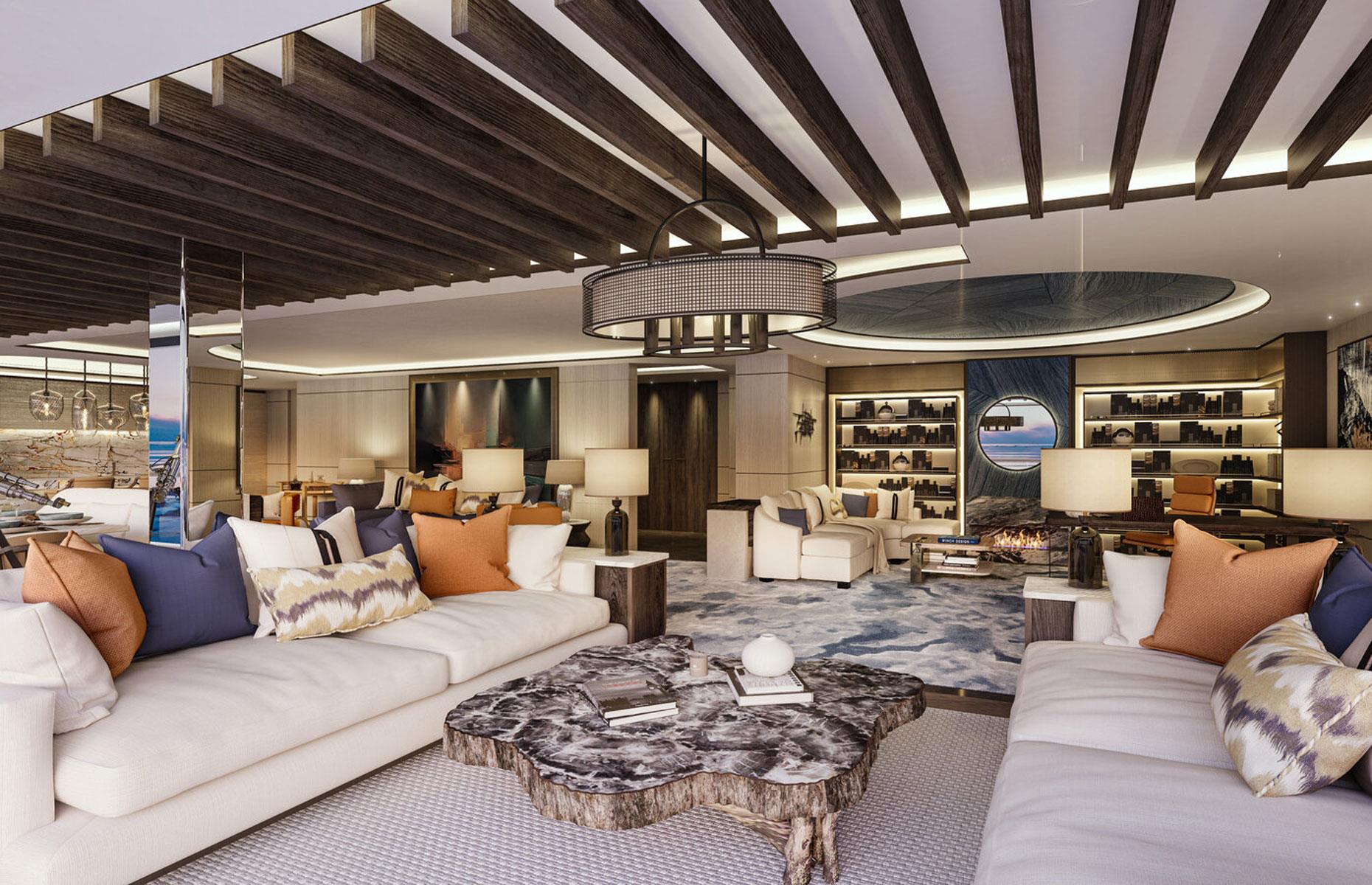
Nearing completion at Norway's Vard shipyard, the six-deck nautical extravaganza is a collaboration between Somnio, Fincantieri, and Vard, while Tillberg Design of Sweden and the UK's Winch Design have looked after the interior design.
The potential occupants of the 39 apartments are being carefully hand-picked. On offer are units with two to four bedrooms, with the option to fully customize them with the likes of a gym, personal kitchen, library, and more.
Those lucky enough to get a Somnio invite can expect to pay from $22 million to secure a cabin in the elite vessel, with service charges likely to be sky-high too.
Liked this? Click on the Follow button above for more great stories from loveEXPLORING
More for You
This is the salary it takes to be considered rich in every state
A NATO country says it could join Ukraine's war with Russia if 2 conditions are met
The fastest dog breed in the world—and the rest of the top 20
18 ‘Normal’ Things From the ’80s and ’90s That Are Considered Luxuries Now
17 People Shared Their Favorite "Poor Man's Meal," And I'm Definitely Gonna Try Some Of These
Map reveals best places to live in the US if nuclear war breaks out
15 Jobs That Pay Insanely Well
15 Traits Of An Alpha Female
Mountain Dew has been banned in nearly 30 countries. Here's why, plus more American favorites that are illegal elsewhere.
Leaving These 13 Things by the Front Door Could Keep You Safe
Man loses 450 pounds after reaching 'rock bottom.' 1 key diet change helped
These Are the 18 Best-Behaved Dog Breeds You Can Own
13 Remote Jobs That Pay Over $200,000 a Year
A woman said her tattoos got her rejected for a job, but experts say personality is far more important
‘The dream of Paris is over’: US track and field star Emma Coburn to miss Olympics after breaking ankle
Pokemon and Krispy Kreme Collaborate on Exclusive Donut Release
28 People Who Very Confidently Had No Clue Who Famous People Were
I Lost 50lbs With 3 Lifestyle Changes
I’m in my 50s, earn over $200,000, own a $1.75 million home and have $4 million in savings. Should I pay off my 2.75% mortgage?
I was angry, aggressive and in chronic pain - until a party drug changed everything
Behavior of oxygen in the ladle treatment of 08X18H10T high-alloy steel
- Published: 27 February 2014
- Volume 43 , pages 684–689, ( 2013 )
Cite this article

- E. V. Shil’nikov 1 ,
- A. V. Alpatov 2 &
- S. N. Paderin 1
31 Accesses
Explore all metrics
The actual activity of oxygen in liquid metal is determined by means of sensors during the ladle treatment of 08X18H10T high-alloy steel. The activity of the components of the metallic and oxide solutions is calculated by means of models of a pseudosubregular solution for the liquid metal and a pseudoregular solution for the oxide slag. The corresponding energy parameters were determined in previous research. A formula is derived for the activity of oxygen in equilibrium with the components of Fe-Cr-Ni-Mn-Si-C-Al-Ti liquid steel, eight-component FeO-MnO-CaO-MgO-SiO 2 -CrO 1.5 -AlO 1.5 -TiO 2 slag, and the gas phase. It is found that the metal-slag-gas system at the end of reduction is considerably closer to equilibrium than at the end of oxidation. The development of the reduction process is studied in terms of the difference in chemical potentials of the actual and equilibrium oxygen.
This is a preview of subscription content, log in via an institution to check access.
Access this article
Price includes VAT (Russian Federation)
Instant access to the full article PDF.
Rent this article via DeepDyve
Institutional subscriptions
Similar content being viewed by others

Dephosphorization stability of hot metal by double slag operation in basic oxygen furnace

Theoretical Bases and Technology of Steel Exhaustive Metal Desulfurization and Direct Microalloying with Boron Beneath Basic Boron-Containing Slags

Content of Total Oxygen in Liquid Steel as a Criterion of Estimating Nonmetallic Inclusions in Pipe Steels
Turkdogan, E.T., Physical Chemistry of High-Temperature Technology , New York: Academic, 1980.
Google Scholar
Kulikov, I.S., Raskislenie metallov (The Reduction of Metals), Moscow: Metallurgiya, 1975.
Alpatov, A.V. and Paderin, S.N., Metally , 2009, no. 5, pp. 21–29.
Alpatov, A.V. and Paderin, S.N., Elektrometallurgiya , 2009, no. 9, pp. 28–36.
Japan Society for the Promotion of Science, Steelmaking Data Source Book , New York: Gordon and Breach, 1988, rev. ed.
Paderin, S.N. and Alpatov, A.V., Elektrometallurgiya , 2008, no. 9, pp. 34–41.
Shil’nikov, E.V., Alpatov, A.V., and Paderin, S.N., Elektrometallurgiya , 2013, no. 7, pp. 25–31.
Prigogine, I. and Kondepudi, D., Contemporary Thermodynamics: From Heat Engines to Dissipative Structures , New York: Wiley, 1998.
Download references
Author information
Authors and affiliations.
OAO Metallurgicheskii Zavod Elektrostal’, Moscow, Russia
E. V. Shil’nikov & S. N. Paderin
Moscow Institute of Steel and Alloys, Moscow, Russia
A. V. Alpatov
You can also search for this author in PubMed Google Scholar
Additional information
Original Russian Text © E.V. Shil’nikov, A.V. Alpatov, S.N. Paderin, 2013, published in “Izvestiya VUZ. Chernaya Metallurgiya,” 2013, No. 11, pp. 19–24.
About this article
Shil’nikov, E.V., Alpatov, A.V. & Paderin, S.N. Behavior of oxygen in the ladle treatment of 08X18H10T high-alloy steel. Steel Transl. 43 , 684–689 (2013). https://doi.org/10.3103/S0967091213110181
Download citation
Received : 09 September 2013
Published : 27 February 2014
Issue Date : November 2013
DOI : https://doi.org/10.3103/S0967091213110181
Share this article
Anyone you share the following link with will be able to read this content:
Sorry, a shareable link is not currently available for this article.
Provided by the Springer Nature SharedIt content-sharing initiative
- oxygen activity
- thermodynamic models
- corrosion-resistant steel
- ladle treatment
- Find a journal
- Publish with us
- Track your research
catamaran sunreef 60 youtube
- International edition
- Australia edition
- Europe edition
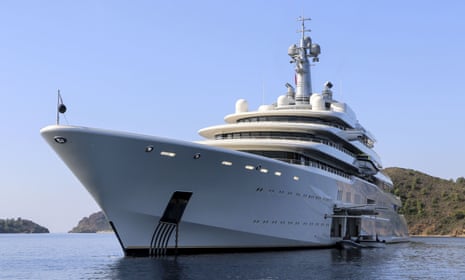
US steams ahead with new rules to curb pollution by superyachts
Despite protests from Russia, America takes unilateral action forcing bling boats to cut toxic emissions
No self-respecting oligarch these days can afford to be without a superyacht. Ownership of a bling boat is as obligatory as the Ferrari in the triple garage and the private jet on standby.
However, within months any billionaire wanting to sail their marine home into US waters will have to comply with stringent new environmental regulations to curb their hulking vessel’s polluting effects. The regulations, which stipulate that certain types of vessel built after 2016 have to be fitted with bulky equipment that converts nitrogen oxides into nitrogen and water, were presented to the International Maritime Organisation, the UN body responsible for reducing shipping pollution, but were resisted by trade bodies representing superyacht manufacturers. They protested that the proposed rules threatened their industry because the engine rooms of some superyachts were too small to accommodate the new equipment, meaning they would have to lose a guest cabin to make room for the technology.
A vociferous lobbying campaign was mounted, with some boat builders suggesting that the regulations represented a “doomsday” scenario for their industry. Russia, too, weighed in against the proposals. Amid the standoff, the US has opted to impose its own unilateral obligations, which come into force from 1 January in North America and the US Caribbean, and will force all newly built boats over 24m long and with a gross tonnage of 500 tonnes or more to cut their sulphur and nitrogen oxide emissions by nearly 80%. Experts predict that the regulations, which will apply to all vessels over 24m by 2021, would soon be rolled out to other maritime areas, including the Mediterranean.
Although the new US rules apply to all types of boat built from next year, it is their impact on superyachts that will be most noticeable. Environmental campaigners have expressed anger that, even when the cheapest of cars are equipped with anti-pollutant filters, superyachts have historically had to meet few environmental obligations to reduce their sizeable diesel emissions.
It reportedly costs more than £250,000 just to fill the fuel tanks of the Vava II, which is almost 100 metres long and was commissioned for a former Miss UK, Kirsty Bertarelli, by her billionaire husband Ernesto. The vessel is dwarfed by Russian billionaire Roman Abramovich’s 160m Eclipse, which can accommodate 36 guests in 18 cabins. U2 singer Bono owns the more modestly sized Kingdom Come which is 60m long and can hold up to 115,000 litres of fuel.
With the super-rich competing to build ever larger vessels, curbing diesel emissions is becoming a priority for engine builders who believe that incorporating anti-pollution systems into their next-generation designs represents a new marketing opportunity.
“These yachts can go up to 200 metres and everything is getting bigger and bigger and bigger,” said Ivo Van Den Berg, business manager at Zenoro, a company that specialises in fitting power systems to superyachts. “These boats need more than shore power can provide when they are moored up. You go to Monaco and you see lot of yachts running on generators all the time. When there is no wind, the emissions are like smog in the city.” Dan Houston, editor at classicsailor.com, said the shipping world was a major polluter that had been slow to clean up its act. “Around 95% of all that we use comes in by ships,” Houston said. “I live in Hove, and you can see the diesel fumes out at sea on certain days. The ships are trucking up and down through the straits of Dover, and when you can’t see the yellow smudge out to sea, that’s when you’re in it.”
Some studies suggest that the health risks of shipping pollution are worse than those caused by traffic pollution. It is claimed that one giant container ship can emit almost the same amount of cancer and asthma-causing chemicals as 50 million cars. A German report estimates that 60,000 deaths each year are caused by shipping pollution.
But, despite these concerns, the shipping world has not yet been subject to the same level of scrutiny as other polluting industries.
- The Observer
- Roman Abramovich
Comments (…)
Most viewed.
js assignment in if


IMAGES
VIDEO
COMMENTS
The accelerating effort to green superyachts reflects similar moves in the aircraft and vehicle industries to adopt new technologies and systems that help to reduce or eliminate carbon emissions ...
For example, a superyacht with a permanent crew, helicopter pad, submarines and pools emits about 7,020 tons of CO2 a year, according to our calculations, making it by the far worst asset to own ...
And that's just a single ship. Worldwide, more than 5,500 private vessels clock in about 100 feet or longer, the size at which a yacht becomes a superyacht.This fleet pollutes as much as entire ...
The Russian tycoon Roman Abramovich, who is reported to have owned at least five superyachts, topped the list published in February last year, accounting for estimated annual carbon emissions of ...
The Earth 300 will be the world's biggest superyacht, yet it will have zero emissions and aims to unite science and exploration to confront the planet's greatest challenge: climate change. The 300 ...
From private jets to superyachts, the emissions produced by the super-rich as they travel around the globe are contributing to staggering inequalities in carbon footprints between the richest 1% ...
Today, there are over 5,000 superyachts longer than 100 feet. Of these, more than 1,800 are over 130 feet long. Superyachts are growing - literally. Two-thirds of superyachts over 130 feet were built in the past 15 years. Currently, Azzam is the longest yacht at 590 feet but gross tonnage also plays a factor so it depends on how you measure.
(Carbon intensity is the amount of life cycle greenhouse gas emissions per unit of energy of fuel delivered.) To drive the trend toward superyacht sustainability and provide a platform for industry-wide collaboration, the Water Revolution Foundation (WRF) was launched by a group of shipyards and industry stakeholders in 2018.
Regulations aimed at limiting noxious emissions from superyacht engines will be in place by January 2021. Kate Lardy investigates how these new rules are impacting the industry ahead of the approaching deadline. "After January 1, 2021, we are out of business selling boats over 24 meters," Pat Healey, president and CEO of Viking Yachts, announced at the Fort Lauderdale Boat Show this past fall.
31 Jul 2023. 84.20m OBSIDIAN is Feadship's first delivery of 2023. She represents a significant step towards Feadship's goal of producing carbon-neutral superyachts by 2030. She is the first of Feadship's new generation of superyachts furthering carbon reduction through a variety of innovative methods. OBSIDIAN was built with the intention to ...
T he rich gazed at their superyachts, and decided they were not enough. The new breed of megayachts, which are at least 70 metres (230ft) in length, may be the most expensive moveable assets ever ...
Multiplied by 300 - roughly the number of superyachts worldwide that fit that bill - that equals over 2 million tons of CO2, more than the individual yearly emissions of about a quarter of the ...
Reducing superyacht emissions through smarter engineering. A new breed of younger, well-informed yacht owners is entering the market. They have a firm mindset and want to enjoy life, but at the same time are environmentally conscious and want to cause as little harm as possible to the climate and to the oceans that they sail in. 5 Minutes.
Jeff Bezos — who has pledged to spend billions of dollars to help fight climate change — nonetheless owns a $500 million superyacht that generates thousands of tons of carbon emissions each ...
EPI data has shown a midsize cruise ship can typically reduce CO2 emissions by up to 20% on average due to reduced fuel usage. These reductions across the reporting fleet so far have contributed to a total SOx reduction of 12 tonnes and a NOx reduction of 300 tonnes. Superyachts are "high on the agenda" for future developments of EPI, alongside ...
By Emily Dawkins. 30 May 2022. Rob Doyle Design and Van Geest Design have partnered up to bring an innovative new superyacht concept to the industry: 40m sailing trimaran DOMUS. With space and performance paramount to the design, DOMUS has been created as the, 'first truly zero emission yacht over 750 gross tonnes'.
From Private Jets to Superyachts, Here's the Climate Impact of the Rich and Famous ... and 8,293.54 metric tons of CO2 emissions—that's equivalent to all the emissions from the energy used ...
Superyachts and private jets: the carbon impact of the 'polluter elite' - podcast. ... is a major factor in the disproportionately high emissions of the richest 10% too, with these emissions ...
So, like any billionaires' superyacht worth its salt, the default design includes a helipad, a swimming pool and spa, a gym, art gallery cinema, party area with DJ booth, along with plenty of ...
May 2, 2024, 7:31 AM PDT. A concept rendering for the Migaloo M5, a proposed "submersible superyacht," showing part of its additional fleet of vehicles. Migaloo. Austria's Migaloo is offering to ...
The biggest of Lürssen's four show-stopping superyachts hitting the water in 2024, Project Luminance spans a whopping 475 feet, making it almost as long as three Olympic-sized swimming pools. The ...
The actual activity of oxygen in liquid metal is determined by means of sensors during the ladle treatment of 08X18H10T high-alloy steel. The activity of the components of the metallic and oxide solutions is calculated by means of models of a pseudosubregular solution for the liquid metal and a pseudoregular solution for the oxide slag. The corresponding energy parameters were determined in ...
Imagined by Flynt for the serious owner and strengthened by Dutch superyacht design studio Vripack's robust naval architecture, Flynt 956 means business. A deep-V planing hull tears across water making the boat efficient, rapid and easy to manoeuvre. It delivers top speed performance from the comfort of adjustable Recaro sport seats.... The Flynt 956 Nova is a 9.56 meters caddy boat with 1 ...
US steams ahead with new rules to curb pollution by superyachts. Despite protests from Russia, America takes unilateral action forcing bling boats to cut toxic emissions. Jamie Doward. Sat 24 Oct ...
The Stunning Ritz Carlton EVRIMA Yacht. Gliding Across Tokyo's Sumida River: The Mesmerizing Zipper Boat. CROCUS Yacht: An 48 Meter Beauty by Admiral. PHI Yacht - Royal Huisma
Impressions; At 91 meters in length, Lady Lara is an ultramodern superyacht with sweeping curves and an elegantly balanced profile. Dynamic, sculpted features carry through her ex